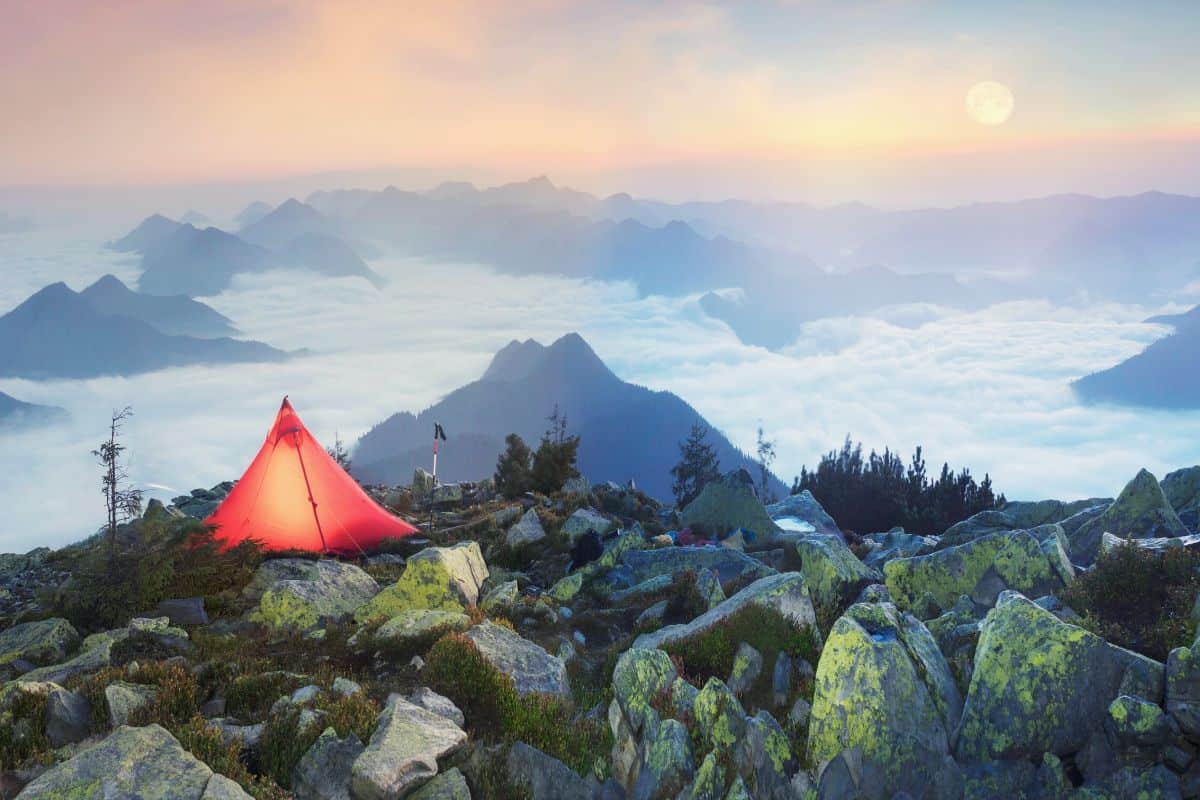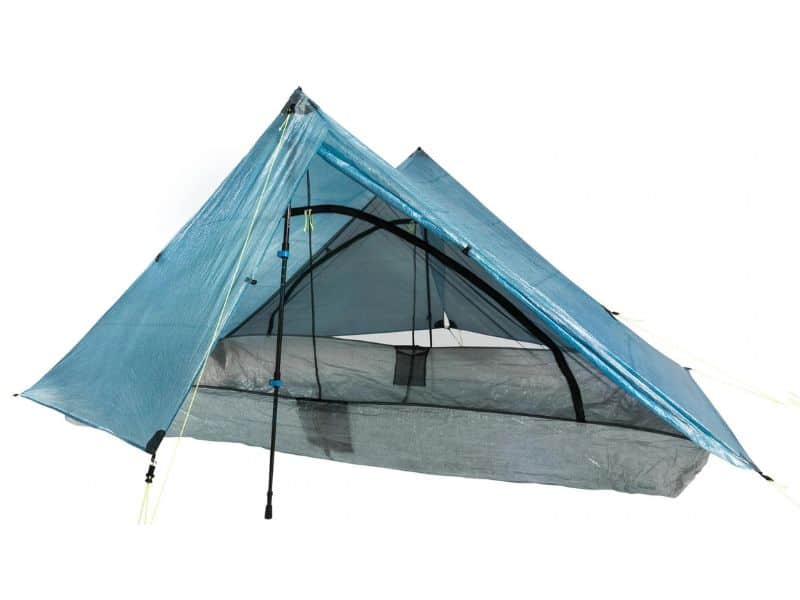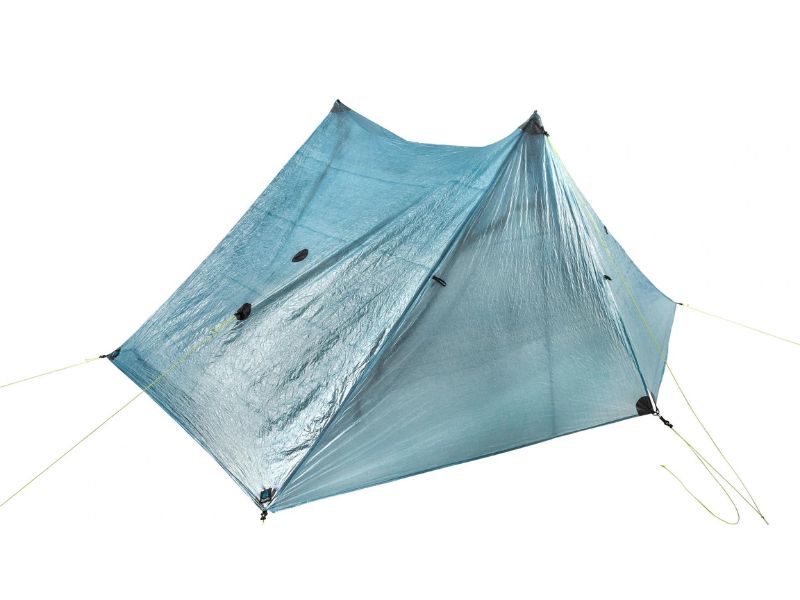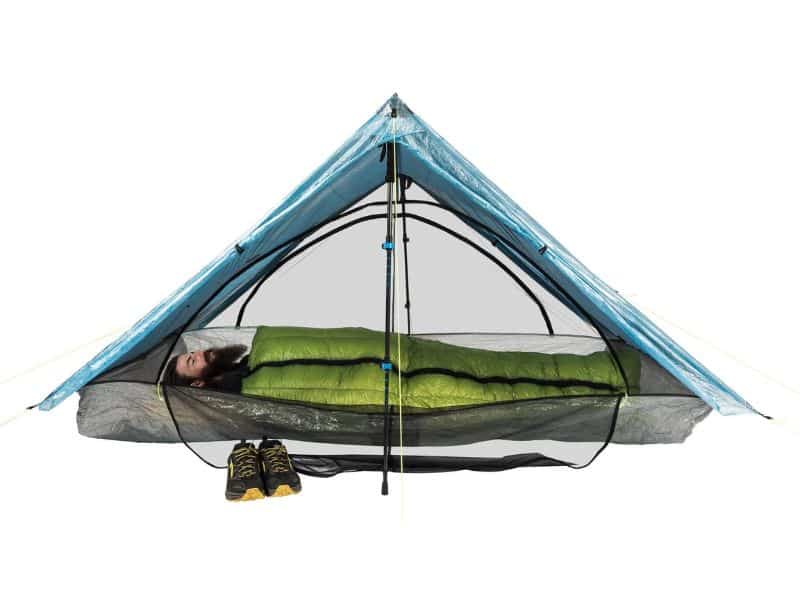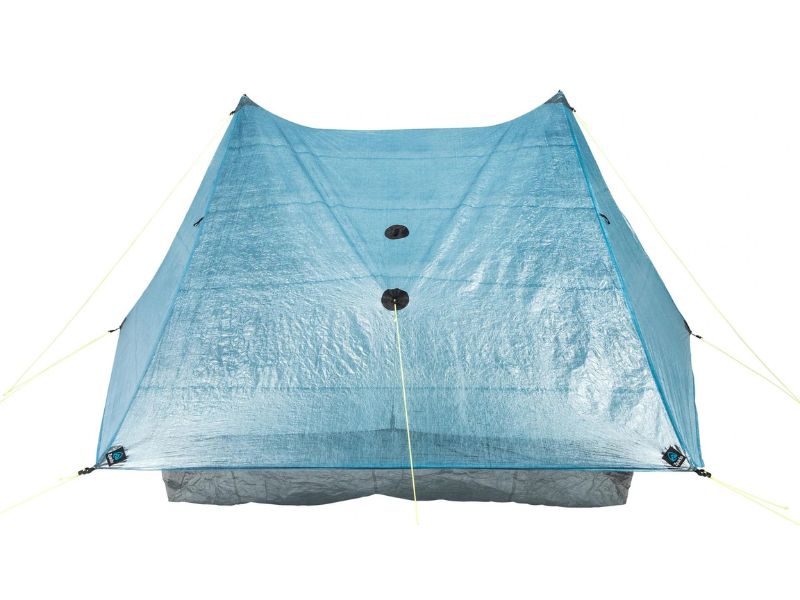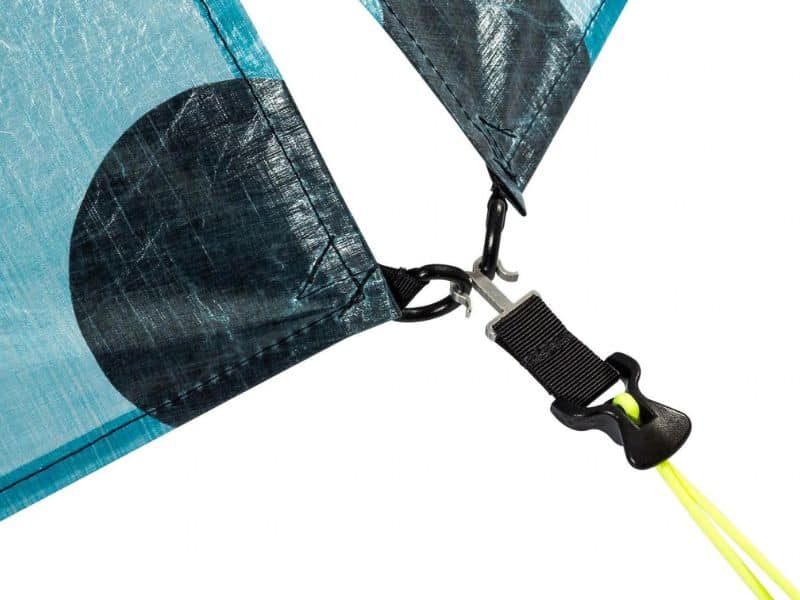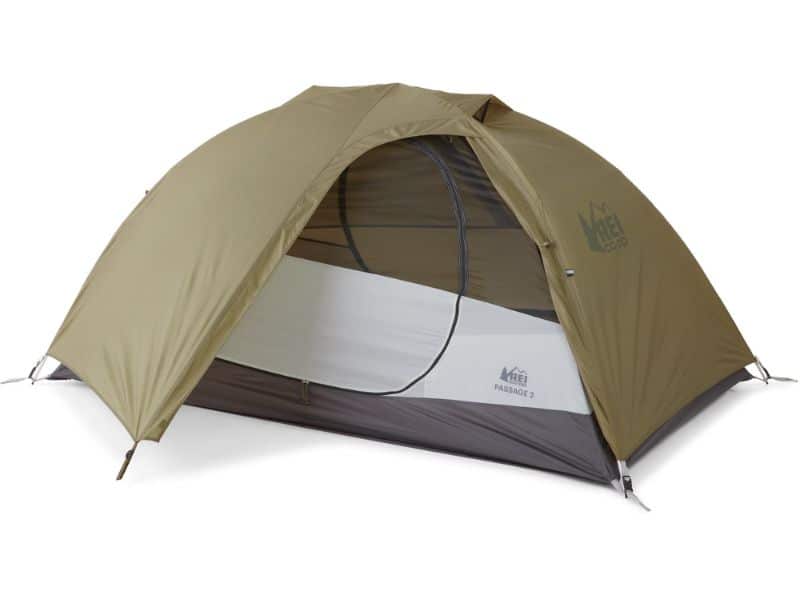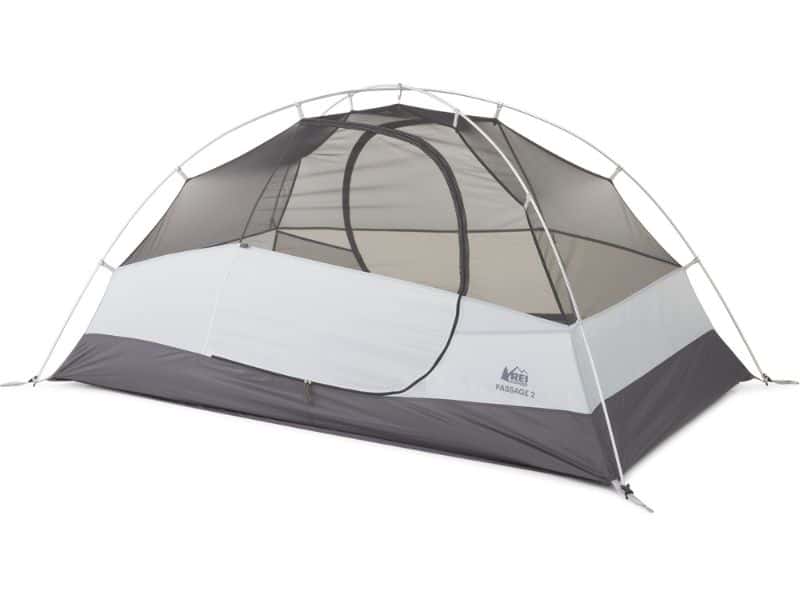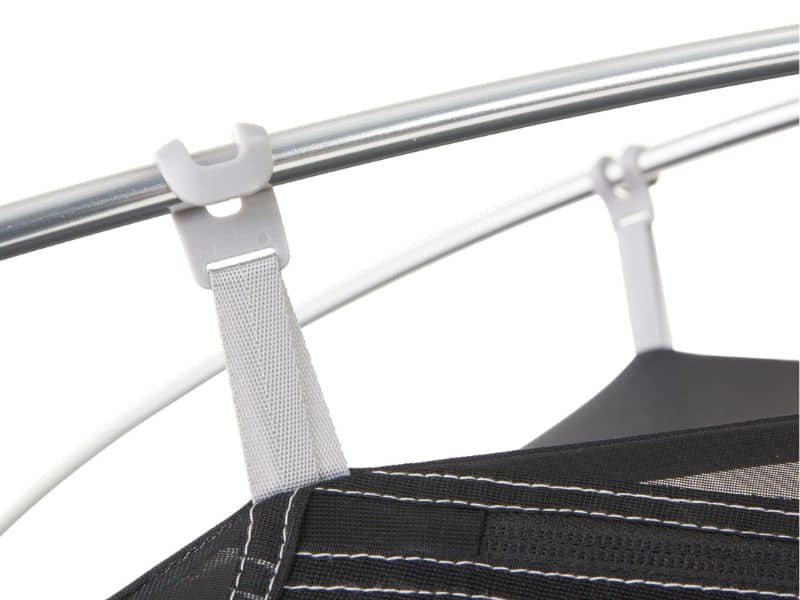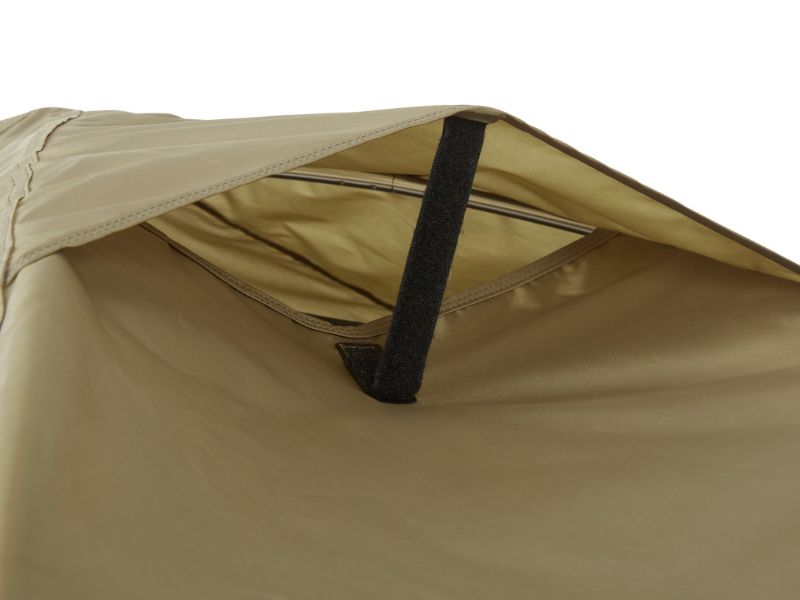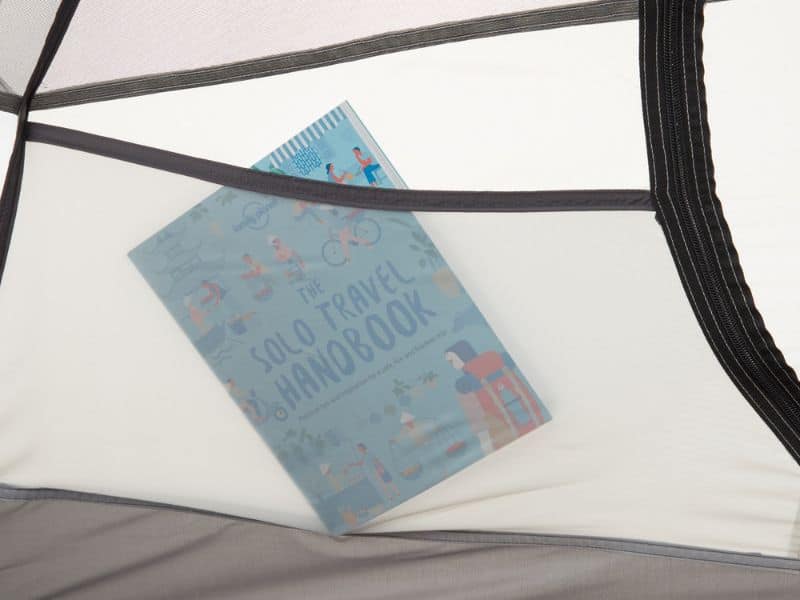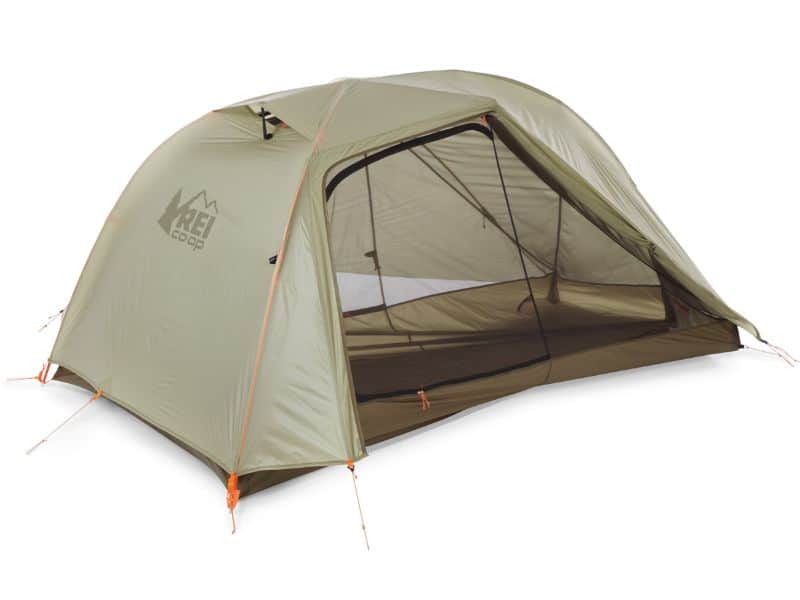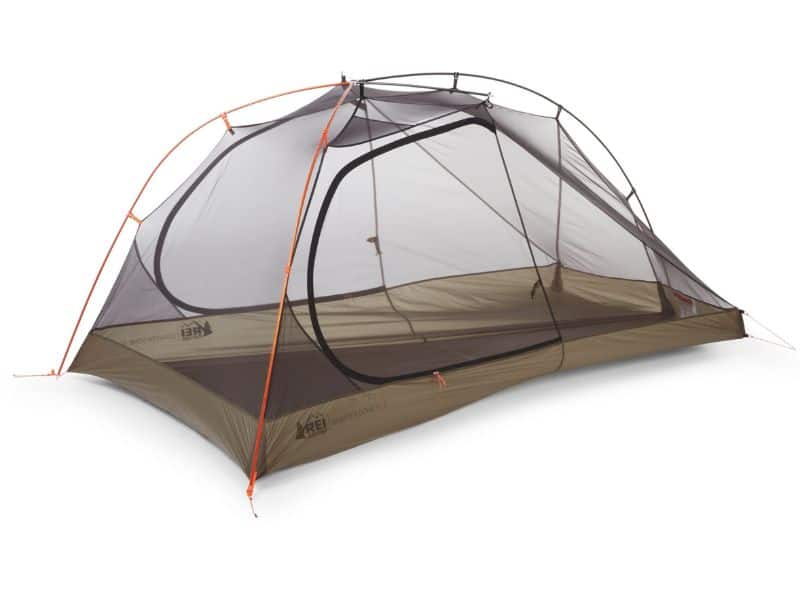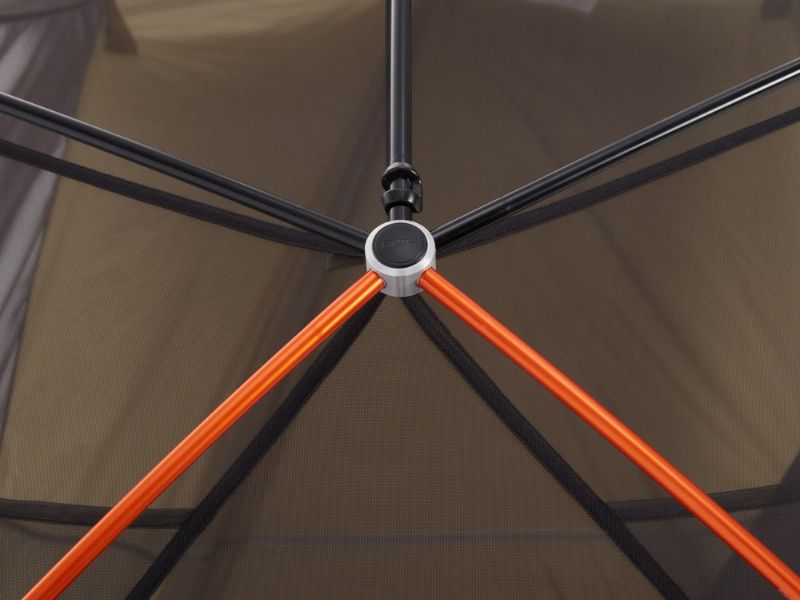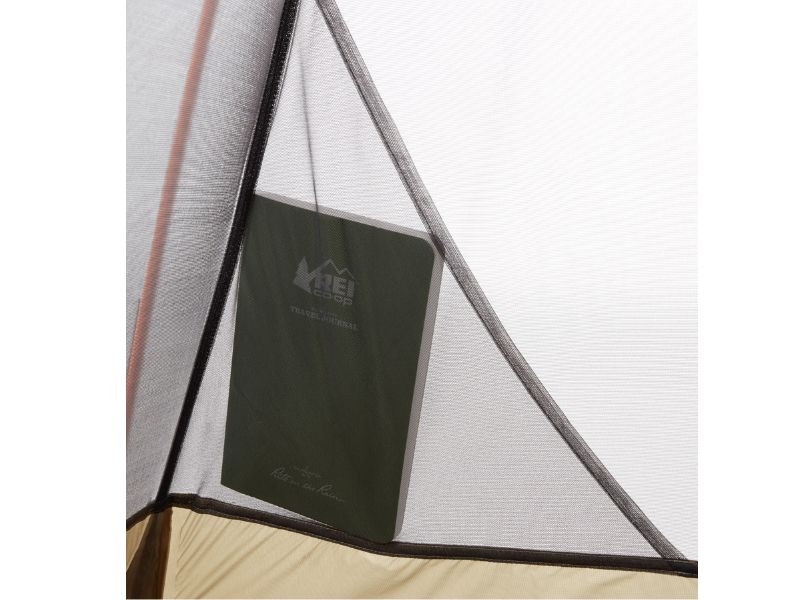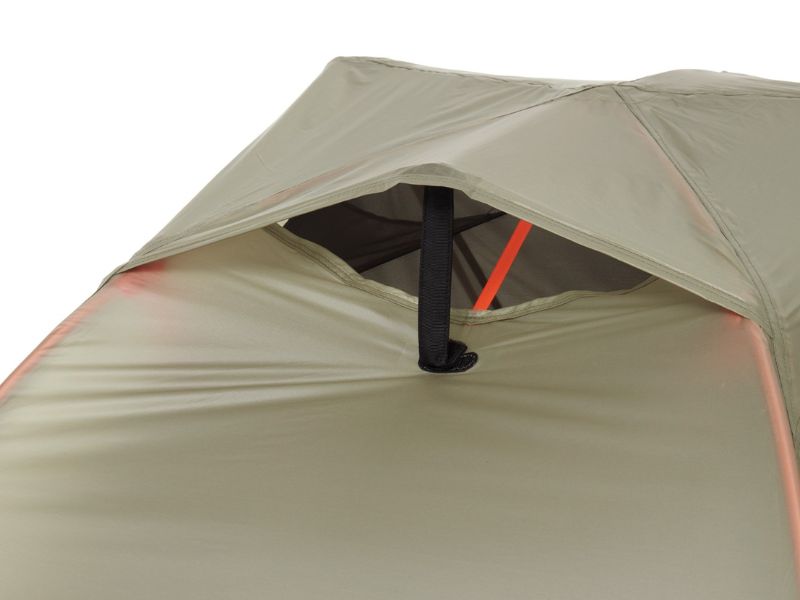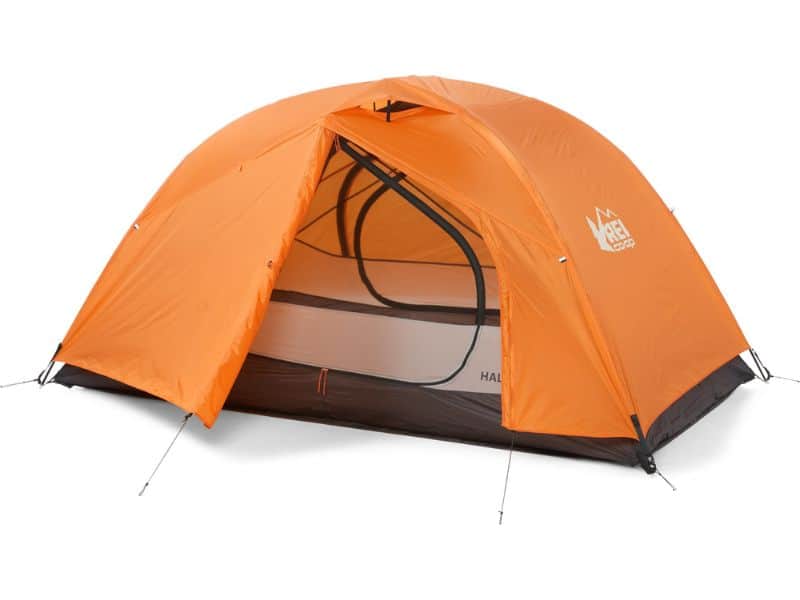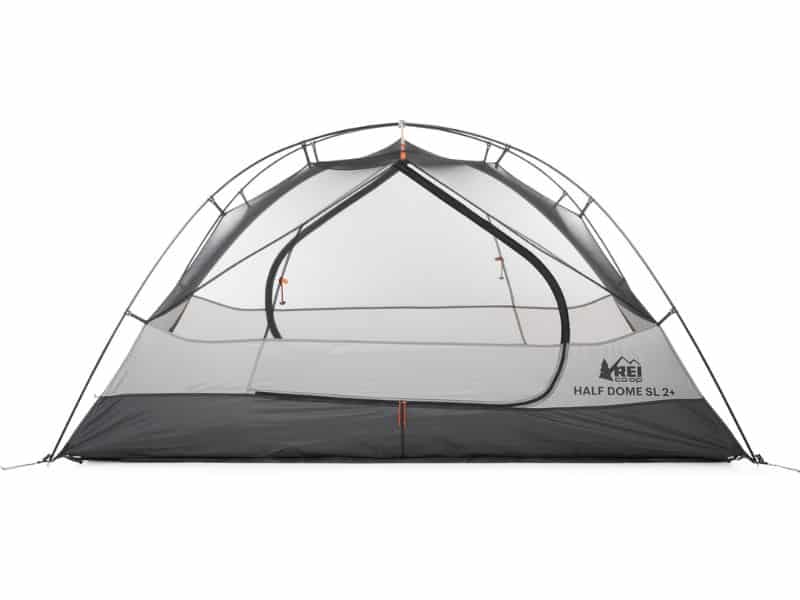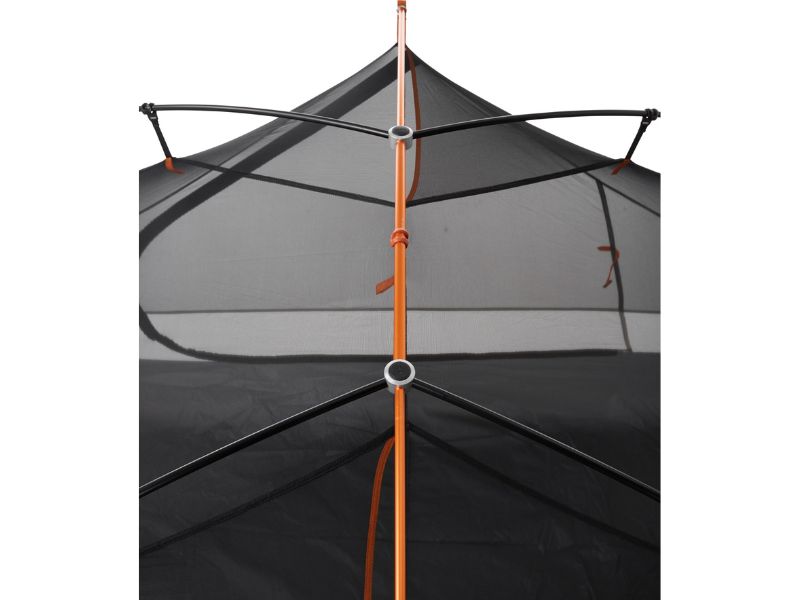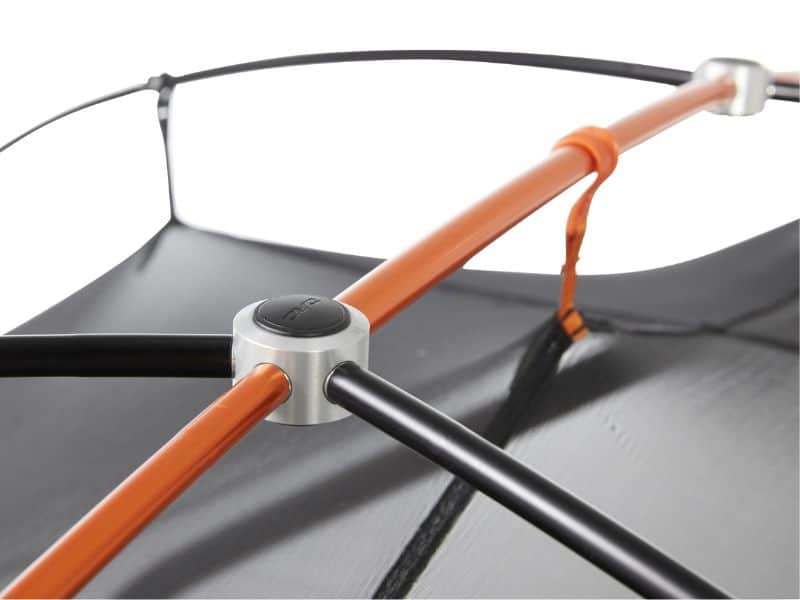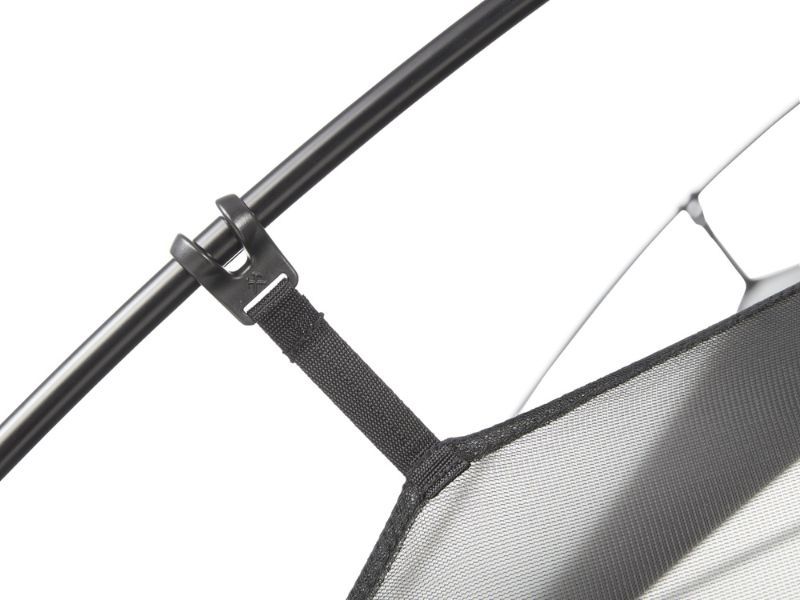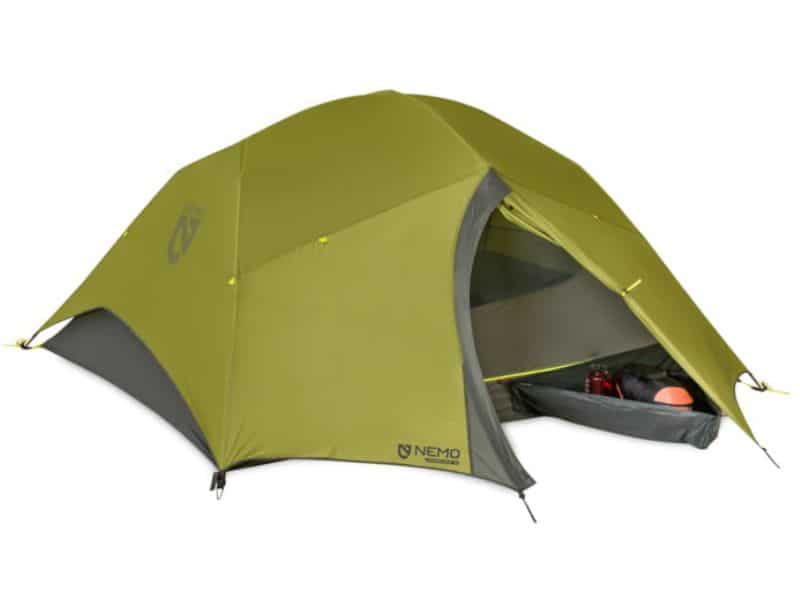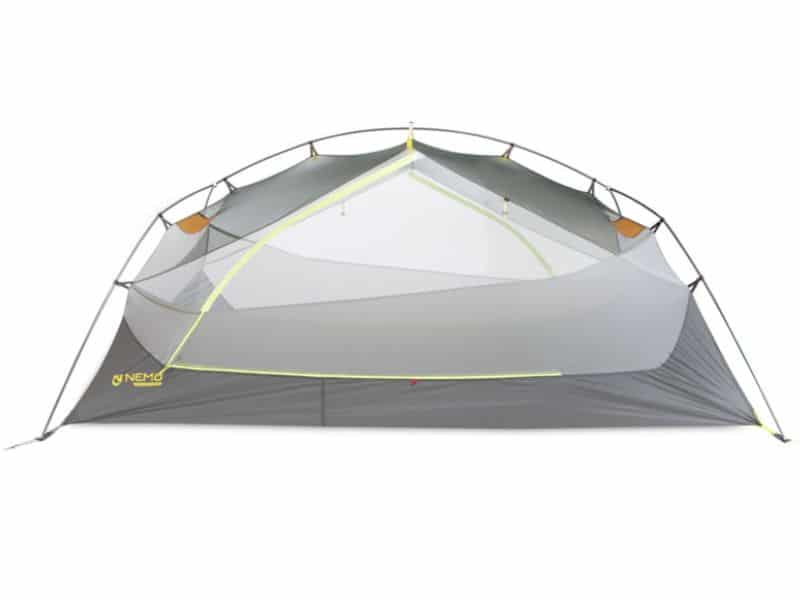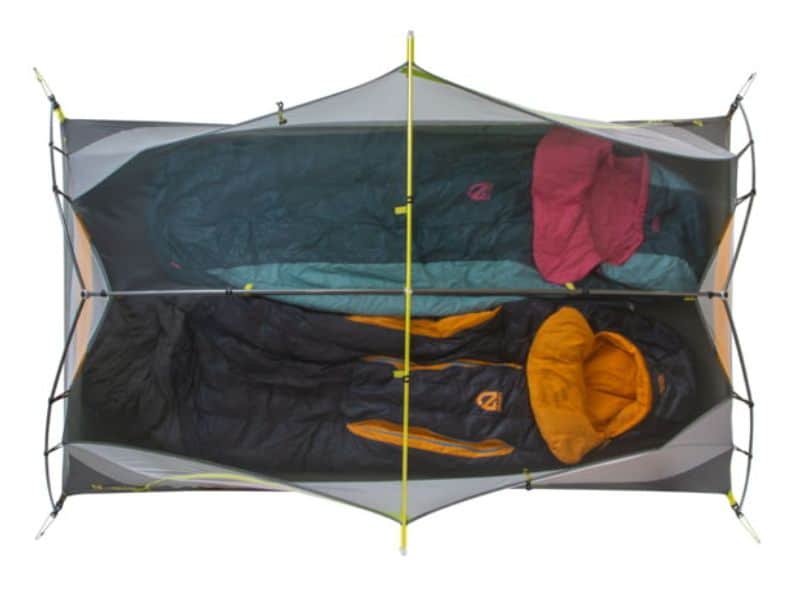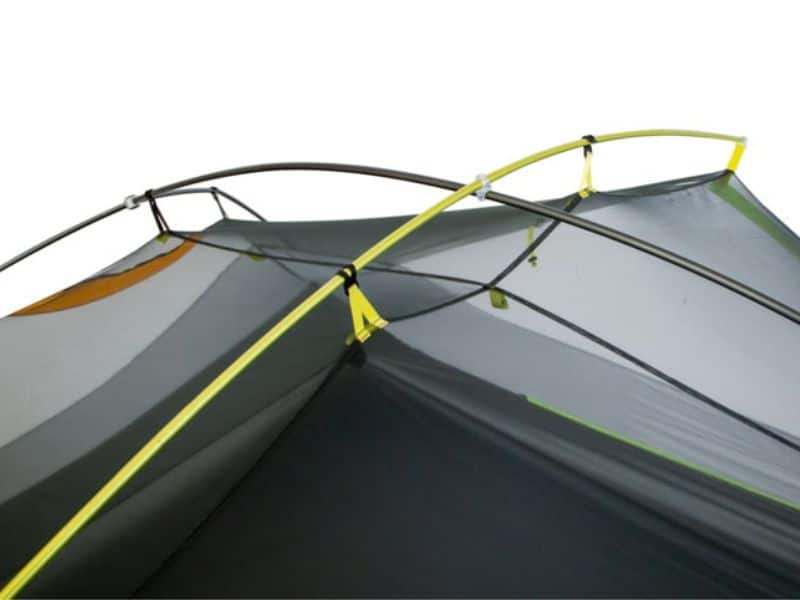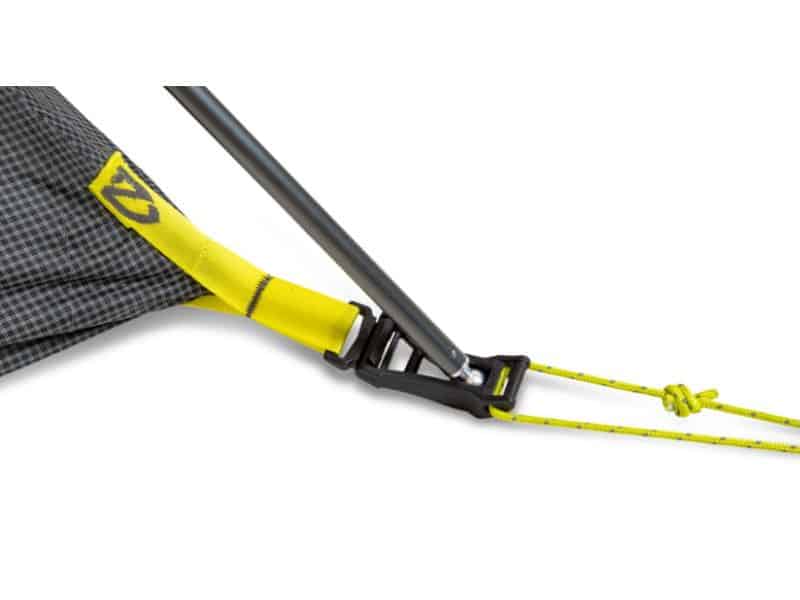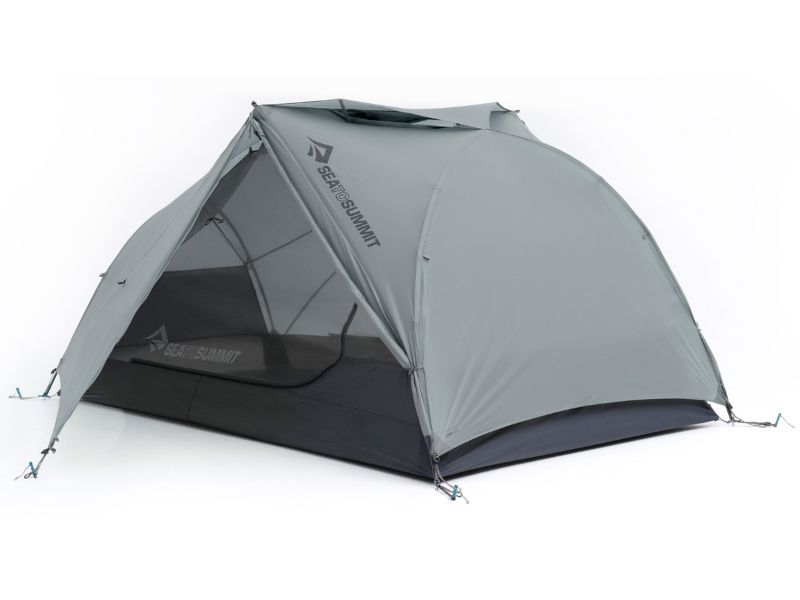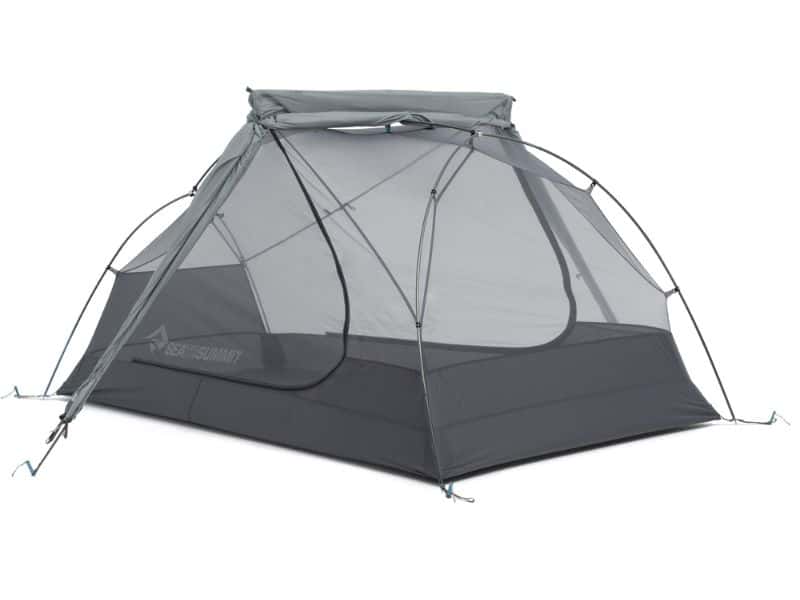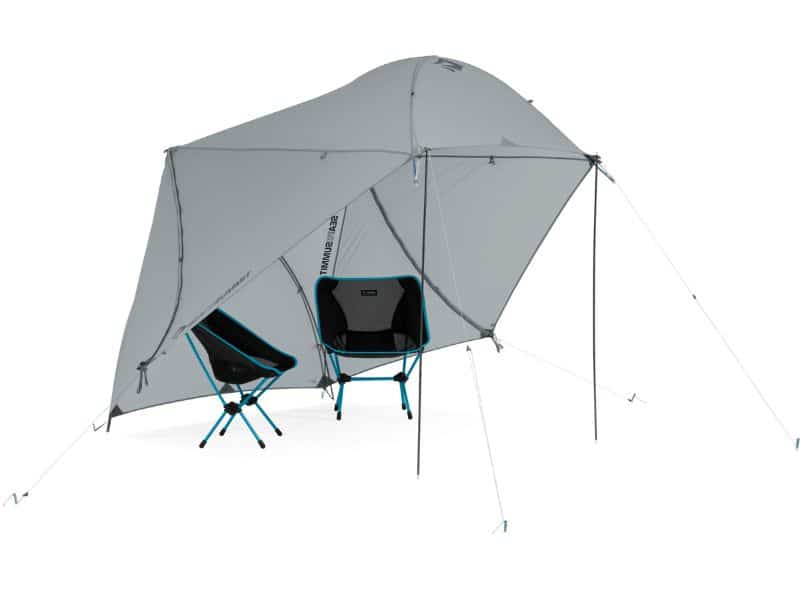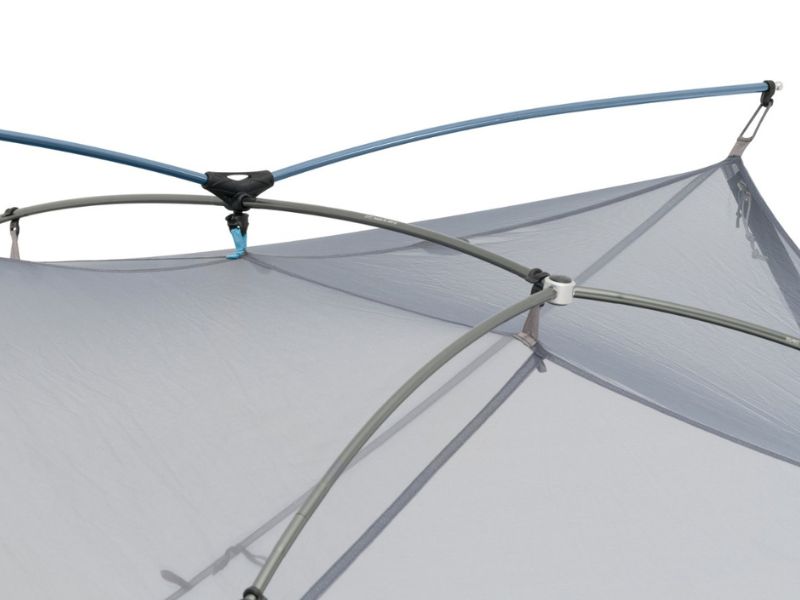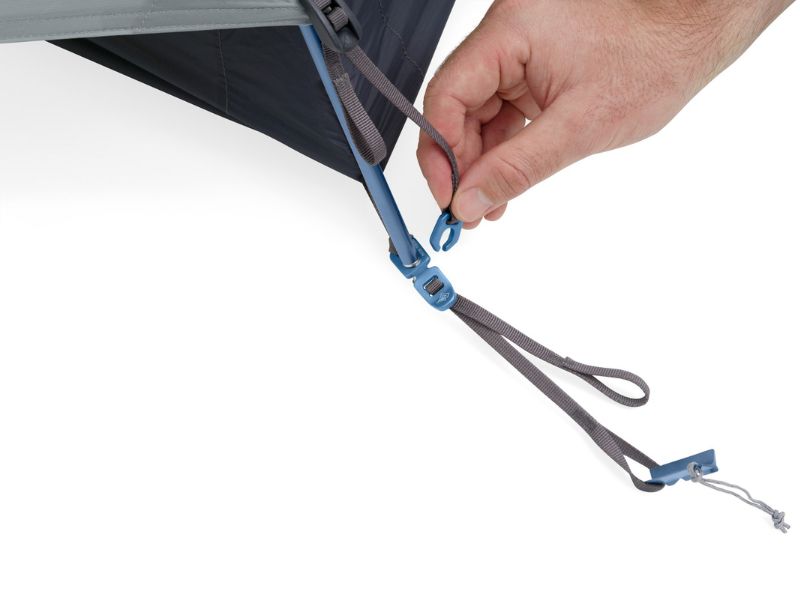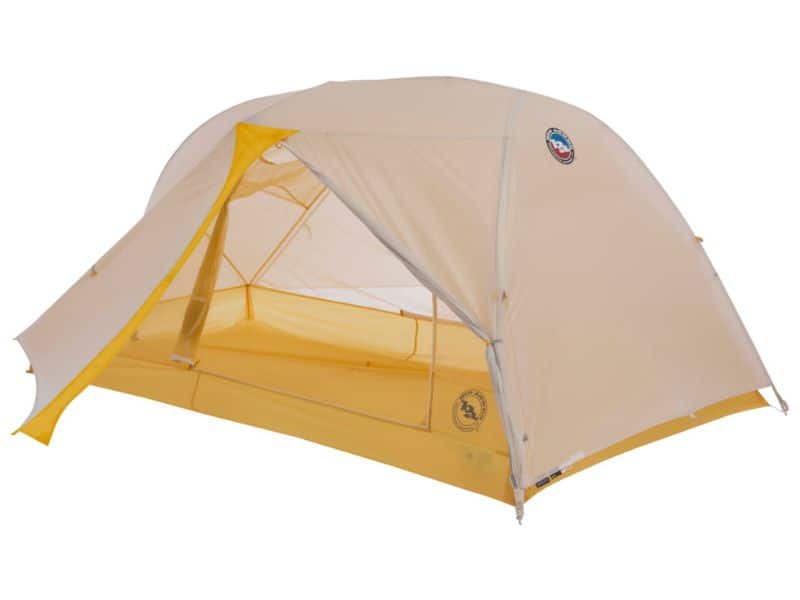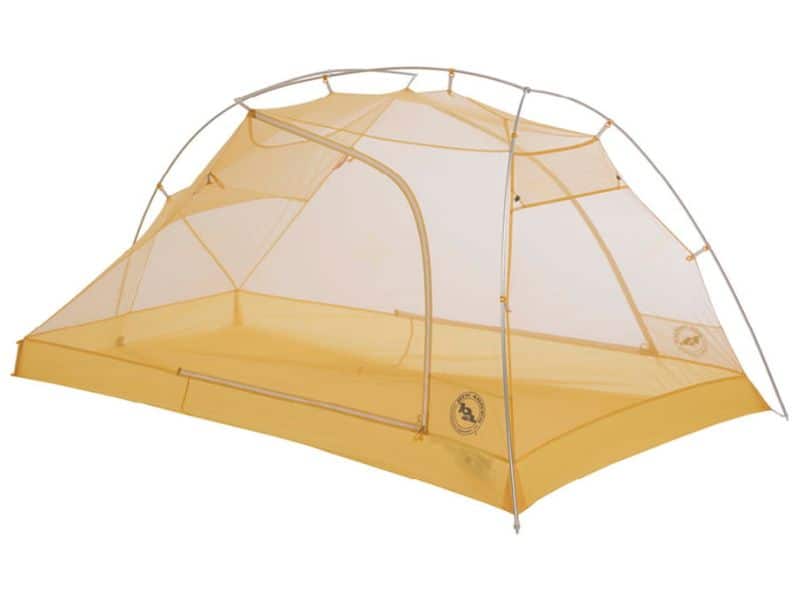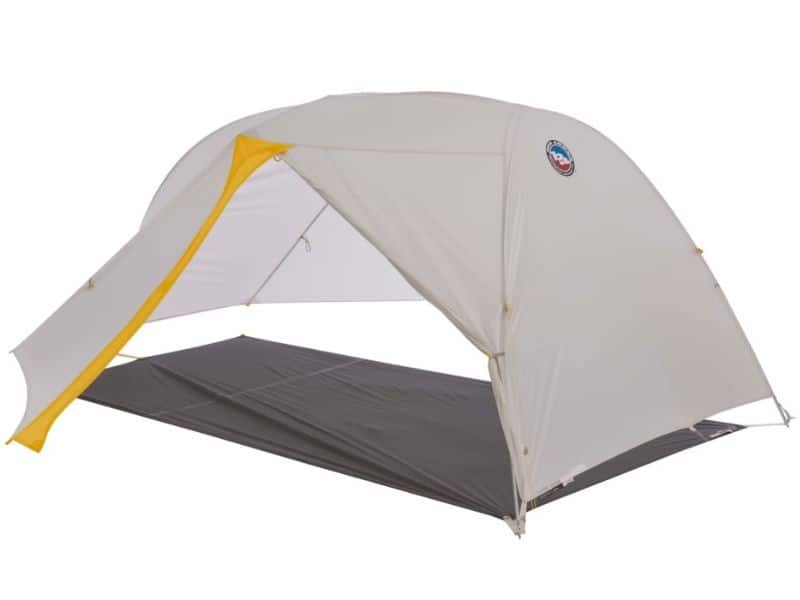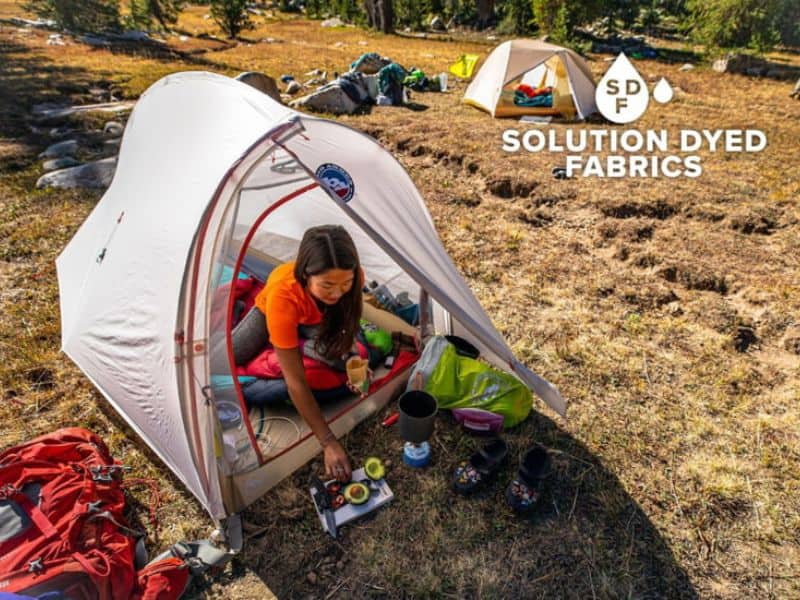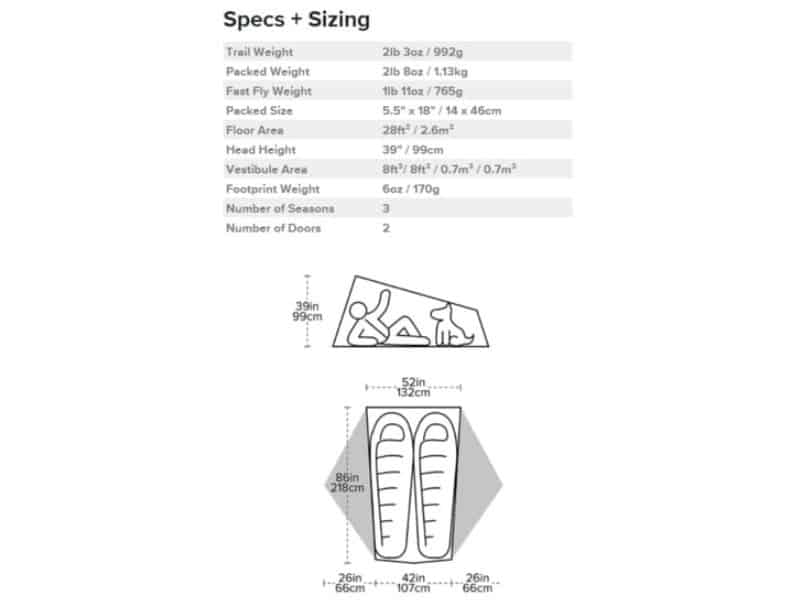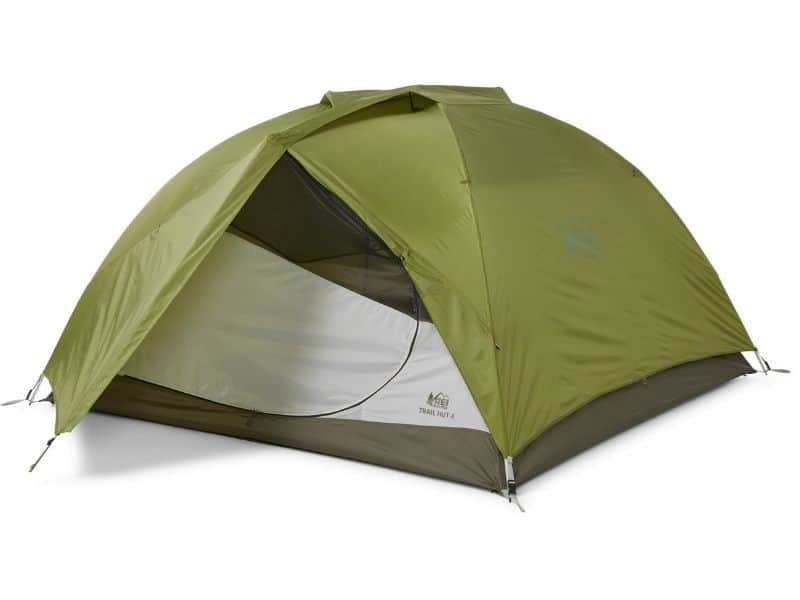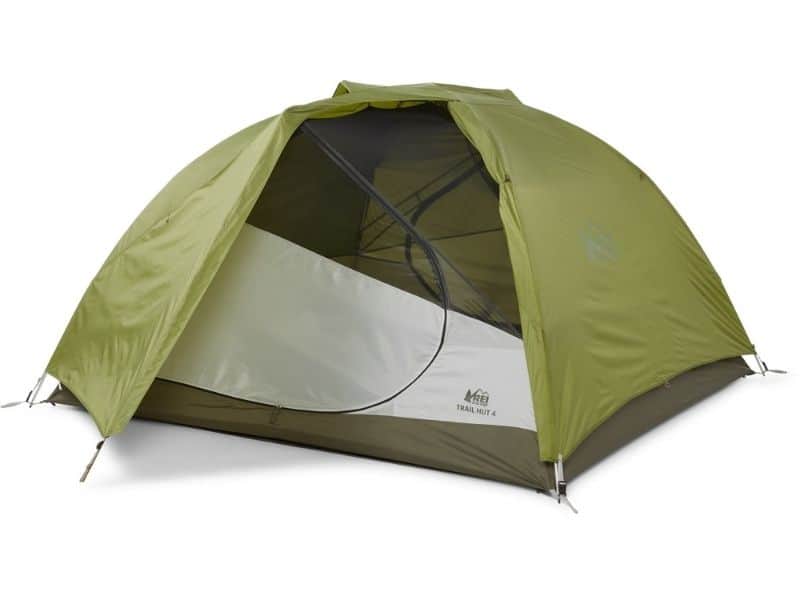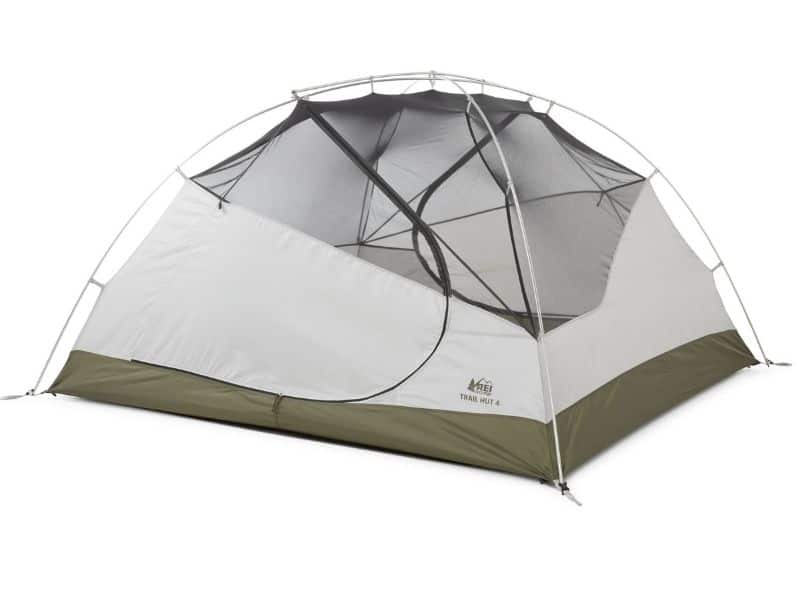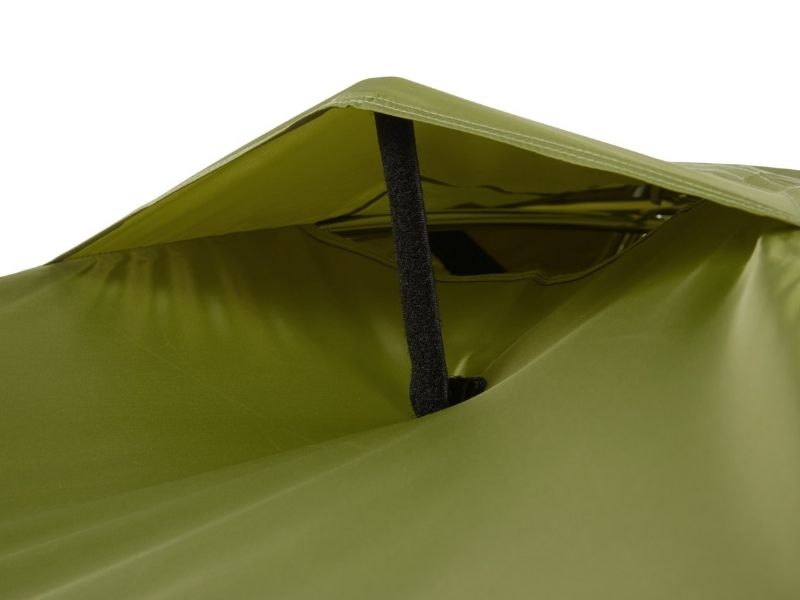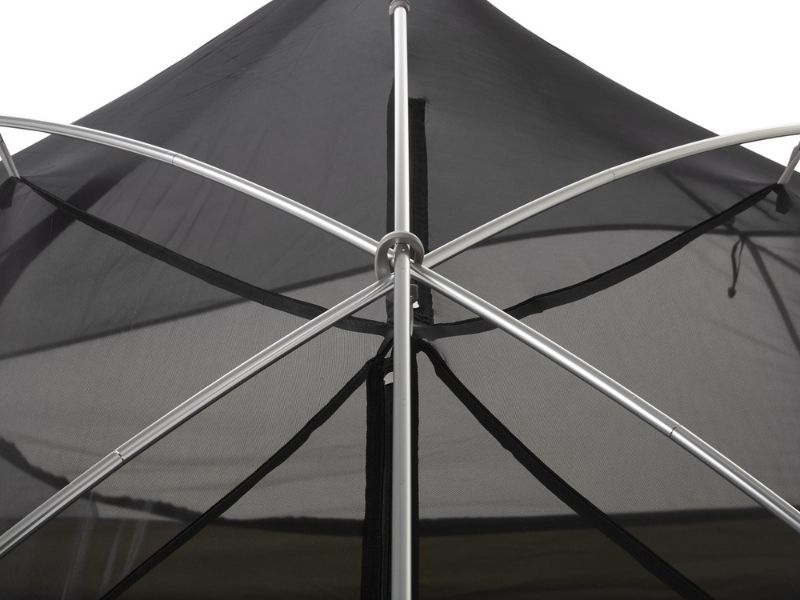Want to make your backpacking trips in the wilderness as safe, comfortable, and convenient as can be? If so, it’s time to ditch your regular car-camping tent and invest in something custom-made for the rigors and specific demands of life on the open trail.
In this post, we’ll introduce you to 12 awesome tents that fit the bill. Top of our list is the Big Agnes Copper Spur HV UL2 but if that isn’t ticking all your boxes we have also reviewed the MSR Hubba Hubba 2, ZPacks Duplex & Triplex, REI Co-op Passage 2, REI Co-op Quarter Dome SL 2, REI Co-op Half Dome SL 2+, NEMO Hornet 2, NEMO Dagger 2P, Sea to Summit Telos TR2, Nemo Kunai 2P, Big Agnes Tiger Wall UL2 Solution Dye, and the REI Co-Op Trail Hut 4.
We’ll also provide you with all the info you need to choose the best backpacking tent for your future adventures; from weight, floor dimensions, peak height, wall slope, doors, weather protection, wall construction, ventilation, durability, ease of setup, and gear storage.
Whether it’s an ultralight tent for the gram-counting minimalist or a four-season bomb shelter for all-weather warriors, our list has it all!
Table of Contents
Backpack Tent Quick Recommendations
-
Editor’s Choice:
Big Agnes Copper Spur HV UL2
“Hits the sweet spot between weight and performance, making it the most balanced backpacking tent on the market.” -
Runner Up:
MSR Hubba Hubba 2
“The Hubba Hubba is a close runner up to the top spot and a great pick if you want a more durable option.” -
Best Ultralight Tent:
ZPacks Duplex & Triplex
“The 19-ounce Zpacks Duplex shaves off weight without any significant sacrifice to comfort.” -
Best Budget Backpacking Tent:
REI Co-op Passage 2
“If you need a well-made, no-frills backpacking shelter at a great price, then the REI Passage is a top contender.” -
Best Budget Ultralight:
REI Co-op Quarter Dome SL 2
“A semi-freestanding, ultra-lightweight tent that retails at a lower price point than other tents in its performance class (without significantly cutting corners).” -
Best Value:
REI Co-op Half Dome SL 2+
“A popular, well-made, and spacious tent that won’t break the bank.” -
Best Ultralight for Livability:
NEMO Hornet 2
“Ultralight but more spacious than a trekking-pole tent, the NEMO Hornet delivers ample livability to a sub-3-pound tent.” -
Best Value for Living Space:
NEMO Dagger 2P
“The most spacious of the premium backpacking tents, the Dagger offers a little more comfort (at the cost of weight) than the Hubba Hubba and Copper Spur.” -
Most Innovative:
Sea to Summit Telos TR2
“Great specs across the board and a load of innovative, value-adding design features.” -
Best 4-Season:
Nemo Kunai 2P
“If you’re looking for a tent for tougher weather conditions, this is it!” -
Best Semi-Freestanding:
Big Agnes Tiger Wall UL2 Solution Dye
“Lightweight, roomy, and user-friendly, the Tiger Wall is our favorite of the semi-freestanding ultralight tents.” -
Best for Families:
REI Co-Op Trail Hut 4
“A roomy, family-friendly shelter that has a wealth of convenience-enhancing features.”
Best Backcountry Tent by Category
Budget: REI Passage 2, REI Trail Hut 4, REI Half Dome SL 2+
Ultralight: ZPacks Duplex & Triplex, NEMO Hornet 2, REI Quarter Dome, Big Agnes Tiger Wall UL2
Livability: REI Trail Hut 4, REI Half Dome SL 2+, Nemo Dagger
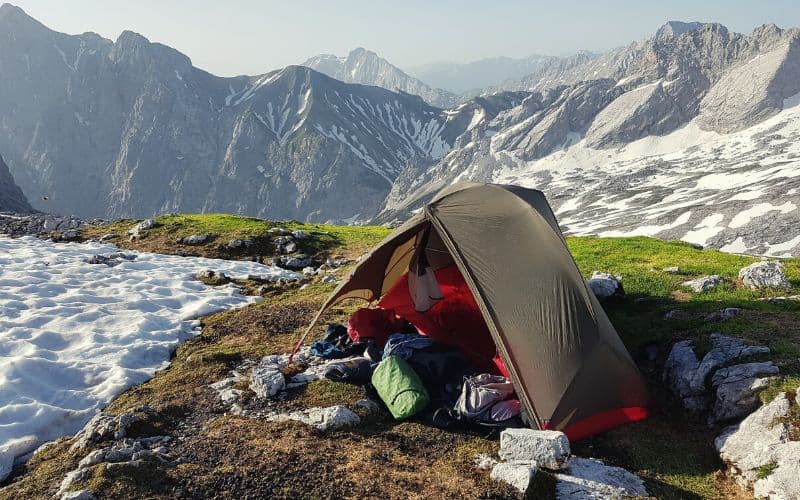
What Are The Best Hiking Tents? Reviews of Our Top 12
The Copper Spur HV UL2 may have won our top spot but there are still a number of other contenders in our shortlist below.
- Big Agnes Copper Spur HV UL2
- MSR Hubba Hubba 2
- ZPacks Duplex & Triplex
- REI Co-op Passage 2
- REI Co-op Quarter Dome SL 2
- REI Co-op Half Dome SL 2+
- NEMO Hornet 2
- NEMO Dagger 2P
- Sea to Summit Telos TR2
- Nemo Kunai 2P
- Big Agnes Tiger Wall UL2 Solution Dye (*ONLY 1 & 3 available)
- REI Co-Op Trail Hut 4
Big Agnes Copper Spur HV UL2
Editor’s ChoiceType: Freestanding ⸱ Floor: 29 sq. ft. ⸱ Height: 40” ⸱ Vestibule: 19 sq. ft. ⸱ Packaged Weight: 3 lbs. 2 oz. ⸱ Packed Size: 9 L ⸱ Rainfly: 1200 mm ⸱ Floor: 1200 mm ⸱ Number of doors: 2
The Big Agnes Copper Spur UL2 is our top choice for the best backpacking tent, as well as one of the most popular options on the market, hitting the sweet spot between livability, weather protection, and low weight.
The Copper Spur is an ultralight freestanding tent with 29 square feet of sleeping space and a peak height of 40 inches. The pre-bent pole design with central hub does a good job of pulling the inner tent outwards to give you more head and shoulder space.
While these stats aren’t overly remarkable, the fact that the Copper Spur weighs only 3 lbs. and 2 ounces, making it 1 to 3 pounds lighter than all of the larger tents reviewed, makes it a standout. Its nearest (and similarly sized) competitors, the Sea to Summit Telos and MSR Hubba Hubba, are respectively 9 and 12 ounces heavier.
The Copper Spur also has a good amount of storage space, featuring two 9-square-foot vestibules outside each of the two doors, an oversized pocket in the ceiling, as well as several interior pockets and loops to attach a gear loft.
The downside to the Copper Spur is the price and the more delicate materials used on the interior. While not unusual for a premium lightweight tent, those concerned about overall durability may want to opt for the heavier but burlier MSR Hubba Hubba. Alternatively, if the price is your main concern, then check out the REI Half Dome SL 2.
Overall, the Copper Spur UL HV strikes the perfect balance between liveable space, overall weight, and features. If you’d like a little more room, be sure to check out the three-person version.
PROs
- Good floor space per ounce
- Lightweight
- Decent headroom
- Easy to pitch
- Two doors and vestibules
CONs
- Interior materials are delicate
- Zippers can snag occasionally
Bottom-Line: One of few lightweight tents that manage to strike the perfect balance between weight and functionality.
MSR Hubba Hubba 2
Runner-upType: Freestanding ⸱ Floor: 29 sq. ft. ⸱ Height: 39” ⸱ Vestibules: 17.5 sq. ft. ⸱ Weight: 3 lbs. 14 oz. ⸱ Packed Size: 8.3 L ⸱ Rainfly: 1200 mm / 20D ⸱ Floor: 1200 mm / 30D ⸱ Number of doors: 2
The MSR Hubba Hubba 2 is another popular 2-person backpacking tent, with its excellent ventilation and livability making it runner-up for our top prize. What sets it apart from its nearest competitors, the Telos, Hornet, and the Copper Spur, is the use of stronger, more durable fabrics on the rainfly and bathtub floor.
The Hubba Hubba boasts 29 sq. ft. of floor space and a peak height of 39”. The poles are held in place by a hub design, and an added cross pole helps pull the interior mesh outwards, thus providing more headspace and a roomier feel. The overall internal space is similar to the Copper Spur, but it feels a bit smaller than the taller (43”) Telos and the Nemo Hornet (31 sq. ft./42”).
Of all the low-weight 2-person backpacking tents, the MSR Hubba Hubba NX 2 uses the strongest fabrics – a 20D ripstop fly with PU/silicone coating and a 30D ripstop floor, meaning it can take more of a bruising than the Telos, Copper Spur, or Dagger. This ruggedness, however, contributes to it weighing 12 oz more than the Copper Spur and 3 oz more than the S2S Telos.
Ultimately, this extra weight is why we decided to award the crown to the Copper Spur HV UL2, but there is an argument to be made for the Hubba Hubba if you need a more durable option.
PROs
- Great quality of build
- Brilliant liveability
- Better durability than the Copper Spur HV
- Great ventilation
CONs
- Heavier than the Telos and Copper Spur
Bottom-Line: A great two-person backpacking tent that only failed to scoop our top spot on account of having a heavier packed weight than the Copper Spur.
ZPacks Duplex & Triplex
Best Ultralight TentType: Non-Freestanding ⸱ Floor: 30 sq. ft. ⸱ Height: 48″ ⸱ Vestibules: 24 sq. ft. ⸱ Weight: 1 lb. 3 oz. ⸱ Packed Size: 8 L ⸱ Rainfly: 15,000 mm ⸱ Floor: 15,000 mm ⸱ Number of doors: two
If you want an ultralight tent that doesn’t compromise on livability, durability, and protection, the Zpacks Duplex (or the three-person tent, the Triplex) is for you.
This non-freestanding tent uses super-lightweight Dyneema fabrics, as well as your trekking poles, to create its A-frame shape. The result is a shelter that weighs in at a tiny 19 ounces.
The resulting structure measures 7.5’ by 4.5’, making it wide enough for two sleeping pads and long enough for even the tallest of backpackers. In addition to the 30 square feet of sleeping space, the two doors open out onto two 12 sq. ft. vestibules, one of the largest vestibule areas on our list.
Thanks to the length of your trekking poles, the Duplex has a peak height of 48”. However, the roof does slope away rapidly from the apex, making head and shoulder space limited. It also lacks the livability of tents such as our winner, the BA Copper Spur.
The non-freestanding design, and the use of trekking poles, also makes it susceptible to gusts of wind – you’re well advised to double-check your guys and tent stakes if blustery weather is approaching.
PROs
- Astonishingly lightweight
- Best interior space per ounce
- Great in wet weather
- Rugged for the weight
- Awesome for backpacking trips
CONs
- More difficult to pitch
- Condensation can be an issue
- Expensive
- Poor wind protection
Bottom-Line: If you’re looking to shave every ounce possible by using a trekking pole tent, then the 19-ounce Zpacks Duplex is the best ultralight backpacking tent in the biz.
REI Co-op Passage 2
Best Budget Backpacking TentType: Freestanding ⸱ Floor: 31 sq. ft. ⸱ Height: 40” ⸱ Vestibules: 19 sq. ft. ⸱ Weight: 5 lbs. 10 oz. ⸱ Packed Size: 14.7 L ⸱ Number of doors: two doors
With the Passage 2, REI once again demonstrates it has a knack for understanding what makes great outdoor gear and somehow manages to build it cheaper than the competition.
A quick search online will turn up multiple tents from smaller brands at around the same price point. However, few budget ‘backpacking tents’ have anywhere near the quality of tent poles, fabrics, and overall design as the Passage 2, leaving it to compete in a category almost entirely of its own.
The Passage 2 has 31 square feet of floor area and a peak height of 40”, making it one of the larger options. However, the lack of ridge poles does mean the mesh walls do impinge on your headspace a little. While the Hubba Hubba and Copper Spur have a smaller footprint, their near-vertical walls give the structure a roomier feel.
Ultimately, where you pay the price is not with your wallet but with the weight. At 5 lbs. and 10 oz., the Passage 2 is a heavy tent. Even divided up between two occupants, at nearly 3 lbs. per carrier, the Passage 2 is best suited for shorter backpacking trips. If you can afford to spend a little more, then the REI Half Dome SL 2 (4 lbs. 5 oz.) is a better option for heading further afield.
PROs
- Simple/intuitive design
- Durable
- Great price
- Nicely sized vestibules
CONs
- Too heavy for long-distance backpacking?
- Lack of ridge pole makes it feel more cramped
Bottom-Line: A slightly heavy but cheap option that still uses quality materials and performs admirably in the field.
REI Co-op Quarter Dome SL 2
Best Budget UltralightType: Semi-Freestanding ⸱ Floor: 28.7 sq. ft. ⸱ Height: 38” ⸱ Vestibules: 21.5 sq. ft. ⸱ Weight: 2 lbs. 14 oz. ⸱ Packed Size: 12.5 L ⸱ Number of doors: two doors
Weighing less than 3 pounds and at a budget price, the Quarter Dome marks REI’s entry into the ultralight tents market with all the forethought we’ve come to expect from this company.
This semi-freestanding tent weighs in at 2 lbs. 14 oz. and retails at a cheaper price than its closest rivals. You get 28.7 sq. ft. of floor area and a decent amount of storage space in the form of two 10.75 sq. ft. vestibules and a variety of interior storage pockets and hang loops.
Unlike the Passage 2, the Quarter Dome uses ridge poles in its design to help stretch out the mesh walls and create more headroom. This gives it the roomiest feel of the three lightweight non-freestanding lightweight tents on our list.
The large amounts of mesh help reduce the overall weight and also make it one of the better ventilated two-person tents we’ve reviewed, meaning it’s a solid performer in hot and humid conditions.
If we’re nitpicking, then we’d have to say this is not the simplest of tents to pitch (not a major issue) and it does weigh 8 ounces more than the NEMO Hornet.
PROs
- Superb price for an ultralight tent
- Lots of mesh and roof vents give good ventilation
- 2 doors
- Large vestibules free up interior space
CONs
- Not an easy setup
- Durability issues with the poles
Bottom-Line: If you’re ultralighting on a budget, then the REI Quarter Dome 2 is hard to beat.
REI Co-op Half Dome SL 2+
Best ValueType: Freestanding ⸱ Floor: 33.75 sq. ft. ⸱ Height: 42” ⸱ Vestibules: 22.5 sq. ft. ⸱ Weight: 4 lbs. 11.5 oz. ⸱ Packed Size: 12.8 L
The REI Co-op Half Dome SL 2+ provides incredible value with its high ceiling, spacious interior, and exceptionally durable tent fabric for a backpacking tent.
In terms of interior space, it is tough to compete with the Half Dome SL 2. The Half Dome has 33.75 square feet of space and a 42” ceiling, combined with the ridge poles, this creates a sizable sleeping area with plenty of headroom. Tacked on to this are two 10.75 sq. ft. vestibules and several interior pockets to store your gear.
Unusually for a backpacking tent, it uses 30/40D materials for its rain fly and tent floor – this is a big step up in terms of durability compared to the other best backpacking tents on our list.
At its price point it is a great value buy, but, unfortunately, this does mean compromises. Mostly in the form of its overall packaged weight standing at 4 lbs. and 11.5 oz., making it over 1.5 pounds heavier than our leader the Copper Spur and a pound heavier than the similar MSR Hubba Hubba NX 2.
We should point out that this is still a pound lighter than REI’s budget tent entry, the Passage. While heavy, it’s still a haulable load over shorter trips, particularly for two people.
PROs
- Largest interior space
- Length & peak height make a good choice for taller folks
- Great price
CONs
- Heavy and bulky
- Susceptible to high winds
Bottom-Line: The Half Dome SL2 is a good quality 2-person backpacking tent that offers the most interior space of any option on our list, and is nearly a pound lighter than the REI Passage.
NEMO Hornet 2
Best Ultralight for LivabilityType: Semi-Freestanding ⸱ Floor area: 27.5 sq. ft. ⸱ Height: 39” ⸱ Vestibules: 14.2 sq. ft. ⸱ Weight: 2 lbs. 6 oz. ⸱ Packed Size: 7.5 L ⸱ Rainfly: 1200 mm / 10D ⸱ Floor: 1200 mm / 15D
The Nemo Hornet 2, with its near-vertical walls, two ridge poles, and a large vestibule that frees up room inside, is our top ultralight choice for livability.
At 2 lbs. and 6 oz., the Hornet is the lightest of the semi-freestanding tents on our list. Nevertheless, it has plenty of great features and is a solid option for backpacking couples or solo backpackers who want a little more space.
One of the cooler, and more thoughtful features we’ve seen is the use of mixed-color mesh. This gives the sidewalls a modicum of privacy (using white mesh), while the black-colored mesh in the ceiling allows less obstructed views of the stars.
While you can fit two regular-sized rectangular sleeping pads in (just), the Hornet can feel a little cramped for two. The floor tapers towards the feet, thus removing the possibility of sleeping top-to-tail with your partner, so broad-shouldered sleepers could quickly become very cozy.
While not hugely larger, the Tiger Wall and the REI Quarter Dome do give you a little more space across the head end of the tent. The slightly larger Tiger Wall also has more storage space for gear.
PROs
- Lightweight tent
- Great packed size
- Mixed color mesh for privacy/stargazing
- Nicely sized vestibules
CONs
- Tight squeeze for two
- Partial coverage rainfly
- Thin materials
Bottom-Line: The NEMO Hornet 2 is one of the lightest tents we reviewed and an excellent choice for ultralight backpackers who want a little more headspace than trekking pole tents provide or intend on using it as a one-person tent.
NEMO Dagger 2P
Best Value for Living SpaceType: Freestanding ⸱ Floor area: 31.3 sq. ft. ⸱ Height: 42” ⸱ Vestibules: 22.8 sq. ft. ⸱ Packaged weight: 3 lbs. 14 oz. ⸱ Packed Size: 10.5 L ⸱ Rainfly: 1200 mm / 15D ⸱ Floor: 3000 mm / 30D
The NEMO Dagger is a freestanding tent that offers the best value for livable space on our list, being smaller only than the REI Half Dome.
With a floor area of 31.3 square feet, steep walls, and a peak height of 42”, this is one of the best backpacking tents for interior space, boasting a roomier feel than near competitors like the MSR Hubba Hubba, Sea to Summit Telos, and the BA Copper Spur. The only model that is larger in our review is the Half Dome SL 2, but this also weighs nearly a pound more.
The downside to the larger interior space, is, of course, total packaged weight. While roomier than its nearest competitors, the Dagger is 4 ounces heavier than the Telos and 12 ounces heavier than the Copper Spur.
PROs
- Easy to pitch
- Spacious interior
- Dual colored mesh for privacy/stargazing
- Nice peak height
CONs
- Poor ventilation with fly on
- Fly doesn’t give full coverage
Bottom-Line: The NEMO Dagger is a premium model that offers more liveable space at a lower price than the Hubba Hubba and the Copper Spur UL2.
Sea to Summit Telos TR2
Most InnovativeType: Freestanding ⸱ Floor: 28 sq. ft. ⸱ Height: 43.5” ⸱ Vestibules: 19.5 sq. ft. ⸱ Weight: 3 lbs. 10 oz. ⸱ Packed Size: 6.3 L ⸱ Rainfly: 1200 mm / 15D ⸱ Floor: 1500 mm / 20D
A relative newcomer, the Sea to Summit Telos TR2 has an innovative design and features not seen in other backpacking tents.
Sitting in a crowded field with tents like the Copper Spur, Dagger, and Hubba Hubba, the Telos doesn’t particularly stand out in any one area. It has a comparable liveable area to the Hubba Hubba and Copper Spur, but a taller peak height, and is smaller than the NEMO Dagger. It’s a similar story for storage space, with the Dagger leading the way.
When it comes to packaged weight, it’s some way off the pacesetter, the Copper Spur, weighing half a pound more (3 lbs. 10 oz.). It does, however, have a slightly smaller packed volume than the nearest competitors.
And what about those features? You can transform the Telos into a semi-open communal shelter by using your trekking poles and it also uses unique “Tension Ridge” architecture that helps to boost interior space and increase door height. The floor and roof vents can also be used to oust hot air and condensation, even when it’s raining.
So why include this tent? The Telos is, in our opinion, an exciting option. While it doesn’t win any category outright, it scores highly enough to keep it in the running and make it a good alternative to the niche’s established top dogs.
PROs
- Great ventilation
- Steep walls and tall apex give lots of headspace
- Innovative features
- Converts into semi-open shelter
CONs
- Pricey
- Heavier than the Copper Spur
Bottom-Line: The Sea to Summit Telos TR2 is an innovative two-person backpacking tent with great liveability and some cool features.
Nemo Kunai 2P
Best 4-SeasonType: Semi-Freestanding ⸱ Floor: 27.6 sq. ft. ⸱ Height: 42.2” ⸱ Vestibules: 6.8 sq. ft. ⸱ Weight: 4 lbs. 5 oz. ⸱ Packed Size: 6.4 L ⸱ Rainfly: 1200 mm / 15D ⸱ Floor: 3000 mm / 30D
If you’re an all-weather warrior or like to do your backpacking in the cooler months of the year, the Nemo Kunai is a shoo-in for your shortlist.
All of the tents above and below fall into the three-season category, but the Kunai is designed for backpacking trips deep into the shoulder season or in winter. While it’s overkill for summer camping, however, its large mesh windows mean you could get away with using it even in later spring or early fall.
The Nemo is among the most weatherproof tents on our list. It uses a 1500mm fly, 3000mm floor, and boasts an aggressive DAC pole structure that makes it a standout performer in strong winds.
This isn’t the roomiest 2-person tent we reviewed (27.6 sq. ft.) and has only 6.8 sq. ft. of vestibule space. However, it’s worth noting that smaller tents are warmer tents (there’s less space for your body to heat), so its smaller dimensions are more likely to be a blessing than a blight if you’re winter camping.
Because the Kunai weighs significantly more than the REI Quarter Dome, Hubba Hubba, and Copper Spur, and is less livable than all three, we only recommend it if cold-weather camping’s your jam.
PROs
- Ideal for harsh weather conditions
- Large vestibule for extra gear
- Very durable
- Stable in strong winds
CONs
- Quite heavy
- Expensive
- Overkill for summer camping
- Fiddly stuff sack
Bottom-Line: A great backpacking tent for unpredictable weather above the treeline or deep into the shoulder season. The only winter tent on our list.
Big Agnes Tiger Wall UL2 Solution Dye (*ONLY 1 & 3 available)
Best Semi-FreestandingType: Semi-Freestanding ⸱ Floor: 28 sq. ft. ⸱ Height: 39” ⸱ Vestibules: 16 sq. ft. ⸱ Weight: 2 lbs. 8 oz. ⸱ Packed Size: 7 L ⸱ Rainfly: 1200 mm ⸱ Floor: 1200 mm / 15D
The Big Agnes Tiger Wall UL2 Solution Dye is our favorite ultralight semi-freestanding tent, offering a sizable floor area, headspace, and practical gear storage options.
Going ultralightweight doesn’t necessarily mean being crammed in like a sardine. At 28 square feet of sleeping area and 16 square feet of storage space, the Tiger Wall beats out its nearest rival the Hornet by a few square feet. While this doesn’t sound like much, a 6% increase in space in an ultralight tent can really make the difference in terms of comfort.
At 2 lbs. and 8 ounces, it is one of the lighter tents we reviewed, only bested by the Zpacks Duplex (19 ounces) and the Nemo Hornet (2 lbs. 6 ounces) in our review.
Like most ultralight shelters, the low packaged weight does mean thinner, less durable materials. The designers also went a little overboard on shaving weight from the fly as there is only a little overlap between the fly and the bathtub floor. If the wind is blowing the rain in from the side, then you may find some of the wet stuff entering your tent.
At present, the Tiger Wall 2 is unavailable from most retailers. Until that changes, the Tiger Wall 1 and Tiger Wall 3 are worth checking out.
PROs
- Roomiest sub-3-pound option
- One of the lighter tents in our review
- Roomy vestibules
CONs
- Minimal clearance between bathtub floor and rainfly
- Less durability of thin materials
Bottom-Line: The Tiger Wall UL2 is slightly roomier and offers more storage space than the NEMO Hornet, but it’s also a couple of ounces heavier.
REI Co-Op Trail Hut 4
Best for FamiliesType: Freestanding ⸱ Floor: 55 sq. ft. ⸱ Height: 48” ⸱ Vestibules: 15.5 sq. ft. ⸱ Weight: 8 lbs. 1.6 oz.
If you’re a backpacking family, it can be tricky finding a tent that’s light and large enough to accommodate all of your clan on backcountry adventures. Luckily, the REI Trail Hut 4 fits the bill.
The Trail Hut 4 offers 55 sq. ft. of floor space and 15.5 sq. ft. of vestibule space, making it large enough for two adults and two kids, or two adults and three smaller kids at a push.
At 8 lbs. and 1.5 oz., it’s not the lightest four-person tent out there, but it’s far more livable than the closest competition due to a ridge pole that extends headroom, double doors, and those roomy vestibules.
A few features make the Trail Hut more family-friendly than other 4-person tents. The most important of these are its two large, D-shaped doors for easy entry and exit, the ability of the vestibule doors to roll up for sky views, the abundance of internal pockets, and the option of creating awnings by pitching out the fly doors (greaton rainy days!).
PROs
- Big enough for four sleepers
- Great peak height
- Two doors
- Fairly priced
CONs
- Quite heavy
Bottom-Line: One of very few good family backpacking tents – and at a great price, too.
How To Choose a Backpacking Camping Tent?
There are a number of key features to look for in a backpacking tent, as covered in the following list.
- Weight
- Packaged Weight Vs. Minimum Trail Weight
- Floor Dimensions
- Peak Height & Wall Slope
- Doors
- Weather Protection
- Wall Construction & Ventilation
- Durability
- Ease of Setup
- Gear Storage
Weight
As a self-reliant backpacker, the weight of your shelter will rest squarely on your back. While modern designs are getting lighter, don’t instantly opt for the lightest backpacking tent within your budget. The reduction in weight often comes at a cost to overall livability, durability, and/or weather resistance, not to mention a higher price tag.
While we’re all for lightweight tents, you should pick one that matches your own needs, expectations, and preferences. We are backpackers, after all, primarily because we enjoy the experience of backpacking. The bottom line: finding the right balance between weight savings and functionality is critical.
For the majority of backpackers, the best balance between livability and weight tends to be in the 3 to 4.5-pound window. Some of our favorite tents such as our top pick, the Big Agnes Copper Spur, as well as the MSR Hubba Hubba 2, and the Sea to Summit Telos TR2 all sit in this range.
Above 4.5 pounds you have budget backpacking tents like the REI Passage, the heaviest 2-person tent in our review at 5 lbs. 10 oz., or the REI Half Dome (which is only just above this threshold). These tents are best suited for car campers who also head out on the occasional short backpacking trip.
Above the 4.5 pound mark, there is also a second category, which is the 3.5 to four-season tents like the Nemo Kunai that are designed for tougher weather conditions. These tents are best suited for colder fall or winter weather outings, or trips above the treeline.
Tents under 3 pounds tend to use lighter, less durable fabrics and make compromises on interior space. These tents also tend to be semi- or non-freestanding, making them more of a challenge to pitch.
We’d highly recommend that first-time backpackers avoid using an ultralight backpacking tent on their first few outings. Once you’ve cut your teeth, however, then choosing an ultralight backpacking tent is one of the largest weight savings you can make.
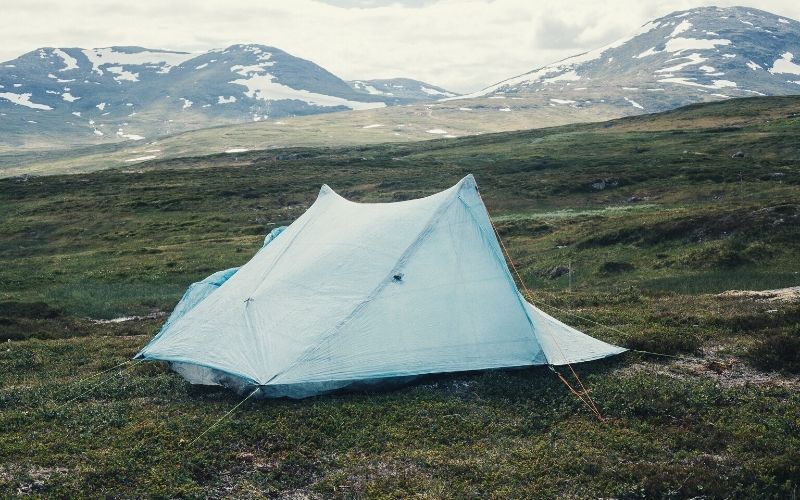
Packaged Weight Vs. Minimum Trail Weight
When it comes to tent weight manufacturers show both the packaged weight and minimum trail weight, often boasting about the latter. The minimum weight is the tent body, rainfly, and poles (no stakes, guylines, or stuff sacks). The packed weight includes everything the tent comes with (which may or may not include a tent footprint) or the entire tent package.
While you can switch out the stakes, guylines, and stuff sacks for lighter aftermarket ones, you’re unlikely to go backpacking without all of them so we always list the packaged weight where appropriate.
Floor Dimensions
How much floor space you’ll need depends on your answers to the following questions.
- Are you camping solo or with a partner?
- How much gear do you have?
- What is your physical stature?
- Can you handle coffin-like confines or do you prefer a little room to sit up and move around?
It shouldn’t come as a surprise that tents are often tighter-fitting than their marketed capacity rating. Additionally, tents for backpacking will sacrifice interior space and liveability to reduce weight, particularly in comparison to heavier car camping tents.
So how much space does the average backpacker need?
Knowing that a regular-size backpacking sleeping pad is normally 72″ x 20″ (L x W) equates to around 10 square feet of space helps. However, this doesn’t account for things like the gear you’d want to bring into the tent and little room for some tossing and turning or stretching of your arms.
We personally find anything below 14.5-15 square feet per person things begin to get too cramped. This is particularly true if you intend or need to hunker down in your shelter for hours due to passing rainstorms.
However, we don’t discount tents below this figure – if you travel fast and light with little gear, or only intend to use your shelter for sleep, then the extra “comfort” space may seem an unnecessary luxury.
The bulk of the tents we reviewed fall between the Sea to Summit Alto TR at 27 sq. ft. and the REI Half Dome SL with its ‘palatial’ 33.75 sq. ft. Our top pick, the Big Agnes Copper Spur sits in the middle with a tight, but comfortable 14.5 sq. ft. per person (for the 2-person version of the tent). The main exception is the 4-person REI Trail Hut (55 sq. ft.).
Don’t forget to look at the actual length and width of the structure. Many tents like the NEMO Hornet or the BA Tiger Wall shave off weight by tapering down to 42-43″ wide towards the foot end. For many, this may not be a problem, but if you intend to use one (or more) wide sleeping pads you may find they won’t fit next to each other.
RELATED: Best Backpacking Sleeping Pad

Peak Height & Wall Slope
Also affecting interior space and overall livability are the peak height and the slope of the tent walls. A tent with a smaller floor space may subjectively “feel” bigger if it is taller and has near-vertical walls.
Peak height is simply the tallest point or apex of the structure, typically where the poles cross in the middle. There is no “right” peak height, but taller campers may want to opt for a taller structure if they intend to spend time sitting upright.
A peak height of 39 – 43″ is pretty typical for most backpacking tents, although the Zpacks Duplex is an outlier thanks to the use of two trekking poles to create its frame, and is the tallest in our review at 48″ (just remember and A-frame design loses height away from center).
Peak height only tells us one part of the story, if the walls of the tent body slope significantly, then much of the floor space is unusable if you want to sit upright. Many premium designs like the MSR Hubba Hubba NX or the Big Agnes Copper Spur stretch the walls outward and make them near-vertical by using more advanced design features like pre-bent poles and ridge poles.
Ultralight backpacking tents like the Zpacks Duplex, and budget tents like the REI Passage, will often use simplified pole structures that result in a sharper slope and less interior space.
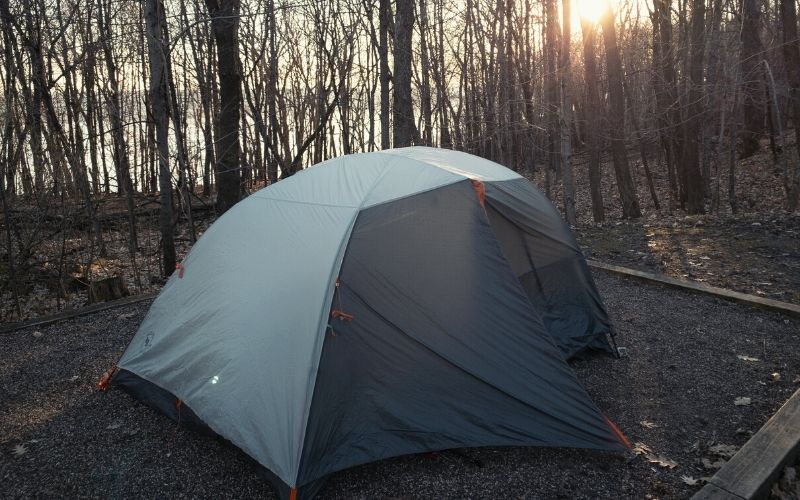
Doors
Often overlooked is the number of doors a tent has. If you’re traveling solo, this isn’t much of an issue. However, if you’ve ever partnered up in a two-person tent with a single door, nighttime pee breaks can be a pain as you clamber over your sleeping companion or are the one being clambered over.
If you’re traveling in pairs, then we strongly recommend finding a tent with two doors. The only tent in our review that has a single door is the Nemo Kunai 2. However, this option gets some slack as the door is located at the head of the tent meaning no crawling over your fellow campers to get out.
Weather Protection
Whenever bad weather strikes your rainfly is your first defense, protecting you from precipitation, wind, and cold air. All the rainflys in our backpacking tent reviews have a DWR waterproof coating, are seam-sealed, and can hold up for hours without leaking.
The water resistance of a rainfly is measured in millimeters of hydrostatic head – basically, the amount of water that can sit on the fabric before the downward pressure forces liquid through. Unless you plan to backpack in very arid conditions we’d never recommend a rainfly with less than a 1000mm rating – the higher the rating the more resistant it’ll be to the wet stuff.
If wet weather is on the cards, we’d always recommend a full-coverage rainfly. Partial rainflys, while great for ventilation, may also allow rain to enter your shelter when the wind happens to be blowing in the right direction. Tents with deeper bathtub tent floors (less mesh), and extra guy-out points are great for wetter or more exposed trips.
A tent’s shape, structure, and pole materials will all greatly influence its capabilities in windy and stormy conditions. Dome-shaped tents like the Hubba Hubba have fewer flat surfaces, making them more aerodynamic. This aerodynamic shape assists in pushing the wind around the structure, helping them handle stronger winds over A-frame tents like the Zpacks Duplex.
When it comes to tent poles, most backpacking tents opt for aluminum poles due to their strength and low weight compared to fiberglass or steel. As most tents use similar types and thickness of aluminum poles, the pole structure will mostly determine the level of weather resistance, with non-freestanding options being less able to weather a storm.
Lastly, to a lesser extent, the number of guy-out points and the quality of the tent pegs will play a role – although, we find that buying aftermarket tent stakes for your tent is usually a good (and cheap) investment.
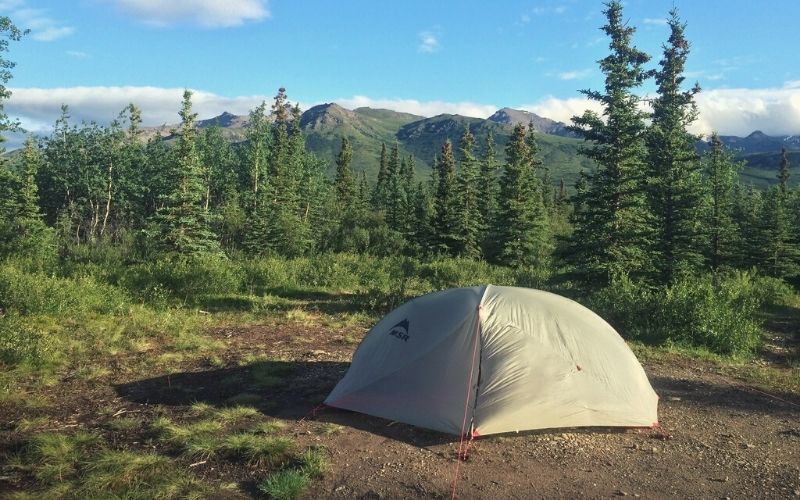
Wall Construction & Ventilation
Ventilation plays a key role in keeping you comfortable in both warm and cold conditions, with wall construction dictating how well this is done. Factors that affect ventilation include single- or double-walled structures, the rainfly design, waterproofing, and the efficiency of vents.
In wet and cold conditions, interior condensation is an eternal struggle, particularly when using single-wall tents. While many backpacking tents are double-walled, some budget shelters only use a single-wall design – we’d recommend using double-wall tents unless you backpack in arid, dry climates.
With double-wall tents, the inner body will be composed of a combination of solid nylon and mesh. As a general rule of thumb, the more mesh there is, the better the inner tent will breathe.
The waterproof coatings on a tent rainfly will restrict ventilation, meaning moisture and warm air get trapped inside. To help with air circulation, roof vents in the rainfly will allow warm, moist air to escape. The placement and design of the vent will determine how efficient it is at achieving this.
Tents like the Sea to Summit Telos also feature a low vent to provide better air circulation. Cooler fresh air will be introduced through the ground vent and push the warmer air up and out of the roof vents.
There is also a case to be made here for tents that have a partial (or cut-away) rainfly – the reduction in coverage should aid with airflow, although be aware that this will also reduce your protection from the weather.
On particularly warm days, removing the rainfly will provide the best airflow. Some models such as the REI Passage are designed to allow you to roll back and tie off the rainfly rather than completely removing it. This small design feature will help you to quickly get the fly back on again if a sudden shower strikes.
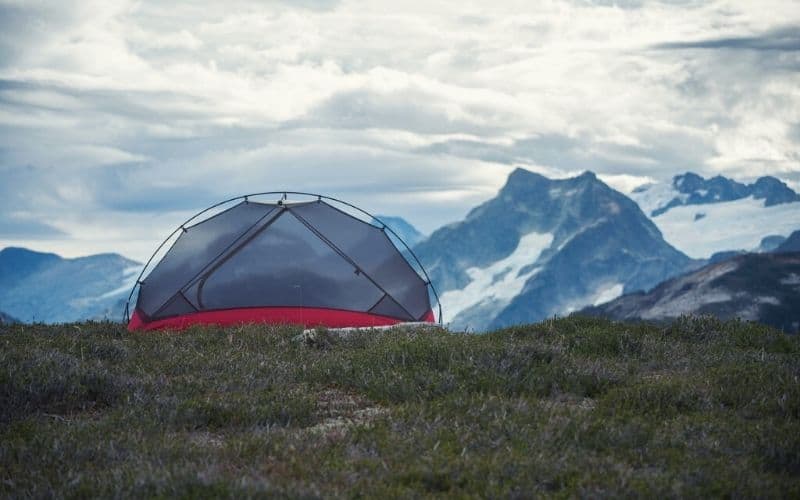
Durability
When measuring tent fabric durability, manufacturers often list a “denier” rating to denote the yarn’s weight. While construction and fabric quality also come into play, generally, the lower the denier, the thinner the fabric, and the more susceptible to tears and punctures.
Most tents will list the thickness of the tent floor, canopy, and rainfly. Of these, the tent’s floor is the most vulnerable to punctures or tears, which is why we would always recommend checking your campsite for rocks or sharp sticks before you start your pitch. A tent footprint will also provide additional protection.
Some of the higher-end tents like the Big Agnes Copper Spur have a silicone coating applied to the fabric to add extra strength but without significant weight increase. However, as you may suspect, these treatments do come with a higher price tag.
Overall, the lighter the tent, the less durable or tear-resistant the materials will be. However, with proper care and attention, all of the tents we have reviewed should last for thousands of miles out on the trail.
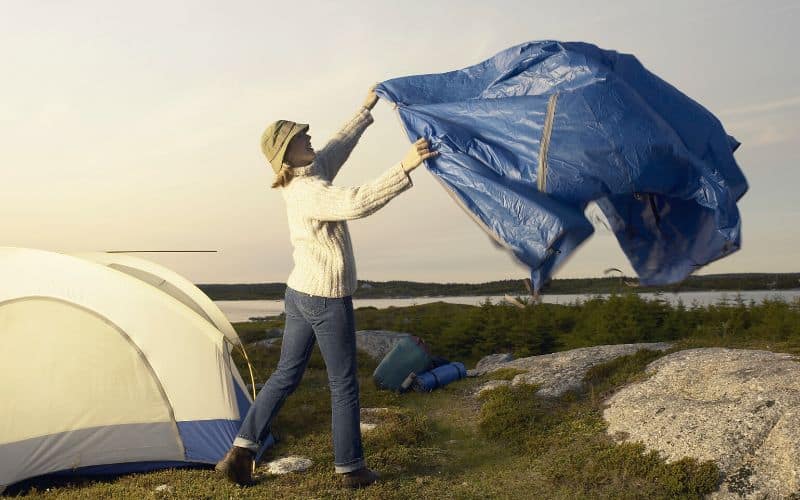
Ease of Setup
With the evolution of backpacking tents, most modern options are easy to set up and can be assembled in minutes. Improved design features, such as attaching the tent body to the pole structure using clips, color-coded poles, and pole hubs at the apex, have resulted in faster and less frustrating pitches.
Freestanding tents that will hold their shape once the poles are attached to the tent body are the easiest to set up. Layout your footprint/tent floor, stake out the corners, connect the poles, and fasten the tent body. With freestanding tents, attaching the rainfly is often the trickiest part.
With fewer pole sections, in order to create a rigid frame, semi-freestanding or non-freestanding tents need to be staked out. This does mean they can be more difficult to set up, requiring some practice to become proficient. Hilleberg tents’ unique designs can make for several frustrating first attempts at pitching.
While a freestanding tent is easier to set up and can be moved once you’ve attached the tent body to the poles, they are heavier compared to non-freestanding or semi-freestanding models.
Whether you choose a non-freestanding or freestanding model, it is always wise to practice setting up the tent at home first. This allows you to not only check you have all the parts but also means you won’t be consulting the manual in a rainstorm during your first pitch in the backcountry.
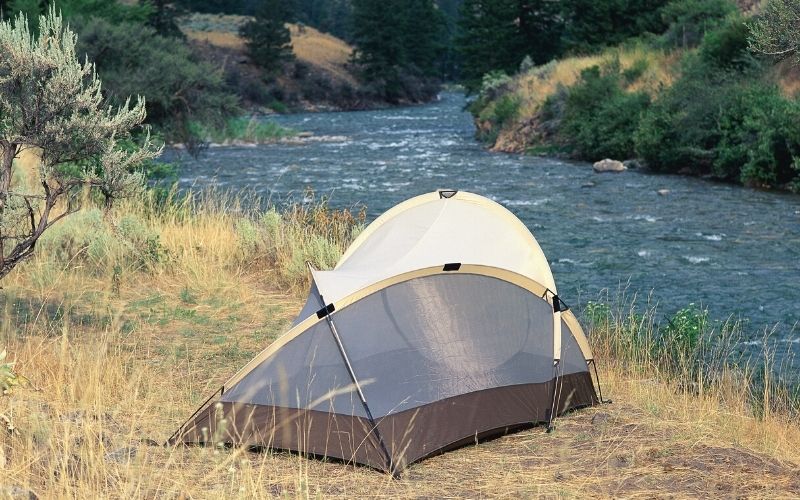
Gear Storage
For most backpackers, gear storage isn’t a priority when choosing a tent, but it can help sway a tight decision between two similarly matched models. When it comes to storing your gear there are two main types of storage: interior and exterior.
Interior storage will take the form of either mesh pockets or a gear loft, which are useful for stowing small but useful bits of kit like maps, headlamps, and extra clothing.
Exterior storage takes the form of either entry door vestibules or gear closets. Without a vestibule, you’re left with the decision to either bring your dirty gear inside with you or leave it outside exposed to the elements. Thankfully, all the tents in our review have vestibules, but the amount of vestibule space can vary significantly.
The smallest vestibules in our review belong to the NEMO Kunai, which at 6.8 square feet had just enough space for a couple of backpacks and hiking footwear. The Nemo Dagger, REI Half Dome, and Zpacks tents all have over 20 square feet, giving you plenty of room for all that extra gear.
RELATED: Best Backpacking Sleeping Bag
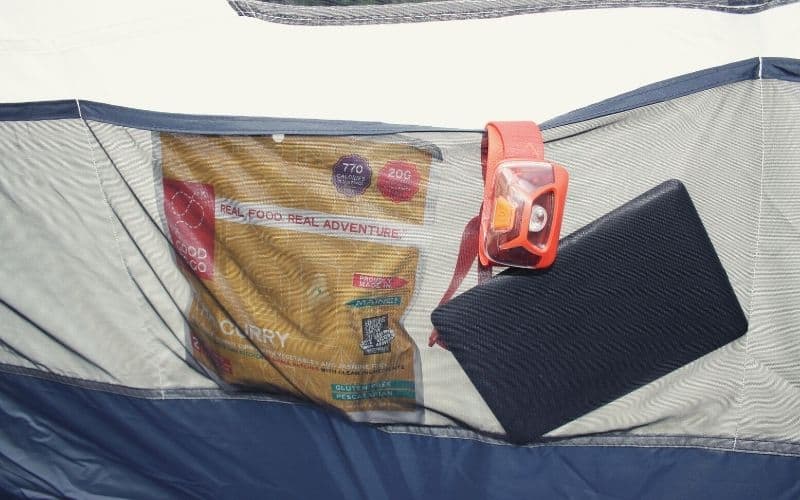
Best Backpacking Tent: The Verdict
Our favorite backpacking tent is the Big Agnes Copper Spur, although the MSR Hubba Hubba provided stiff competition. Both are excellent backpacking tents and perform well across the board, but the Copper Spur edged ahead due to its lower weight.
If you’re on a tighter budget, you can’t go wrong with the REI Passage 2. While a little heavier than the competition, the Passage 2 ticks every other box and is a steal at the price.
If you liked our article, let us know in the comments box below. And if you’d like to share it with your friends, share away!
